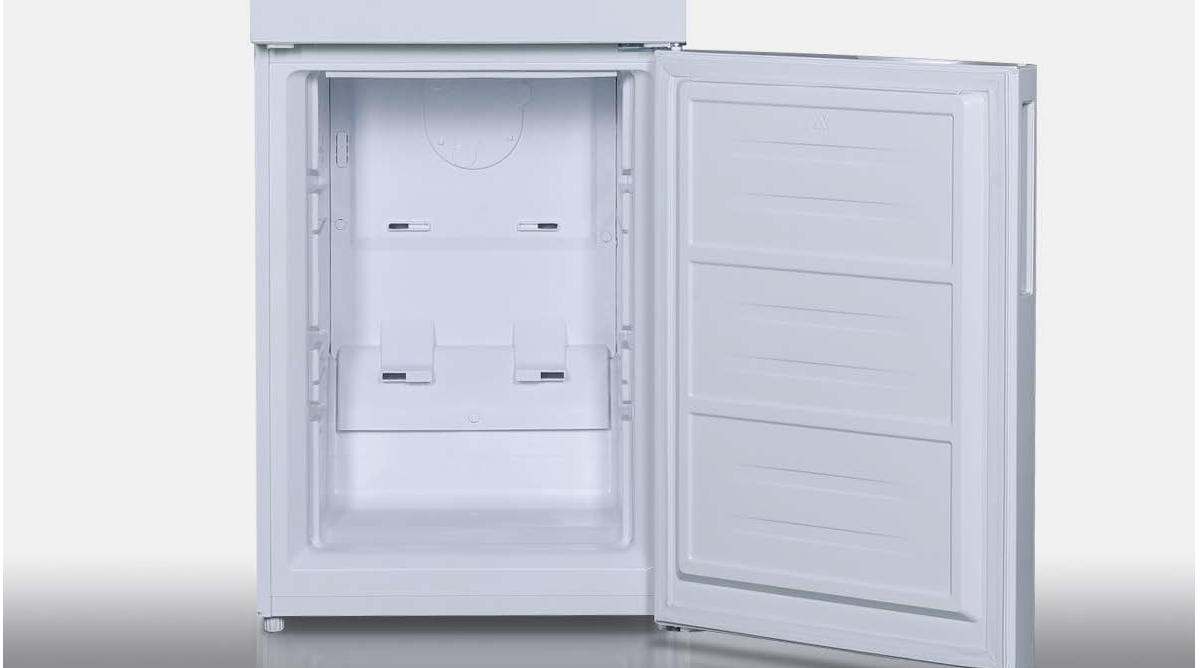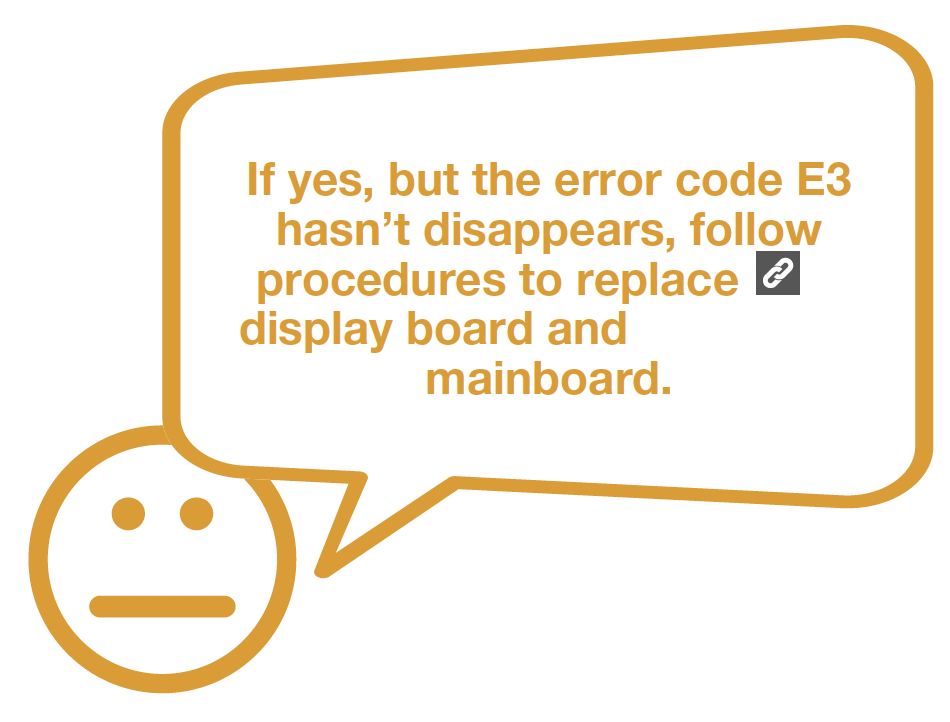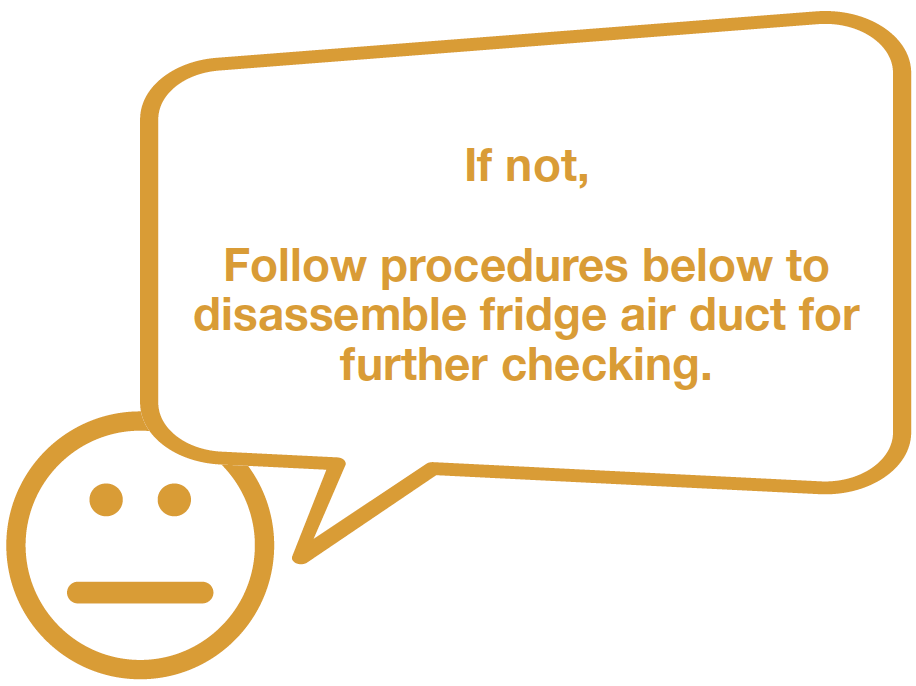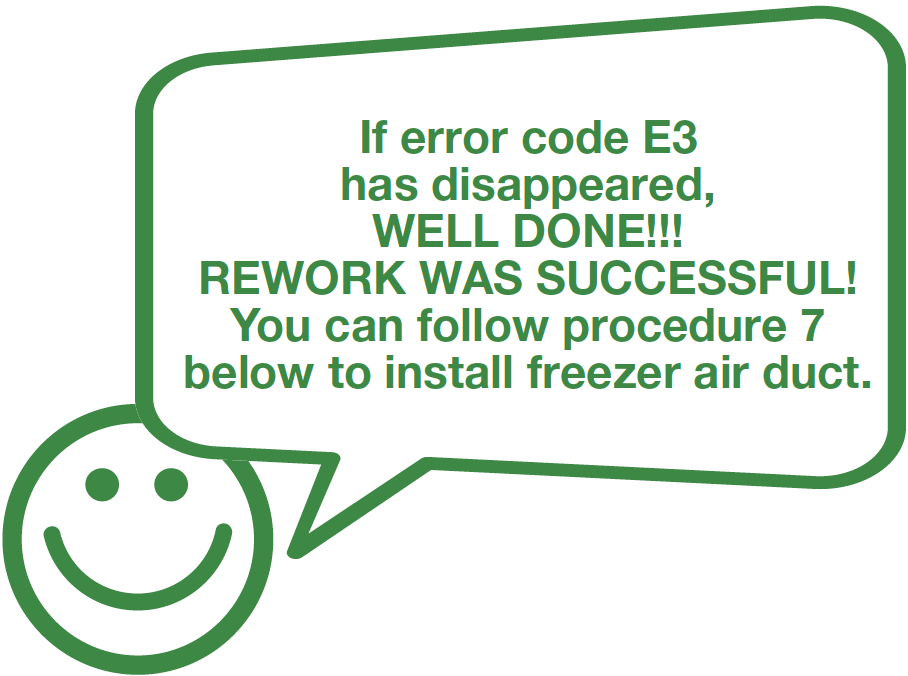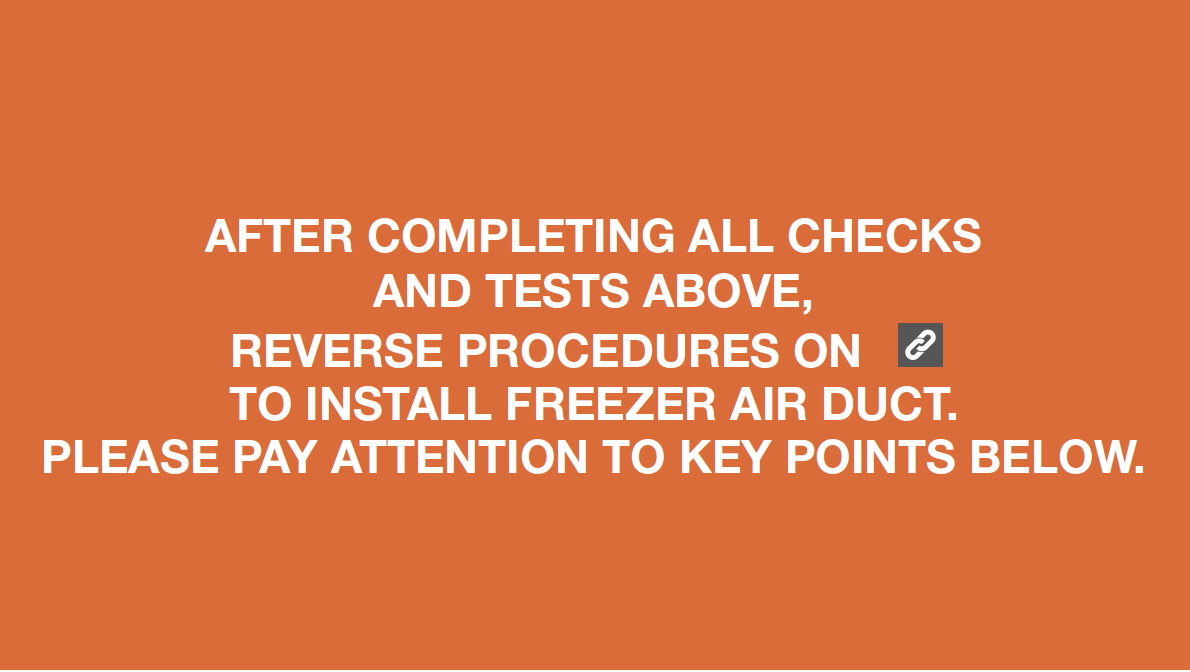

CHECK AND TEST 1
Step 1
Unscrew cover of mainboard with a Cross-head screwdriver.
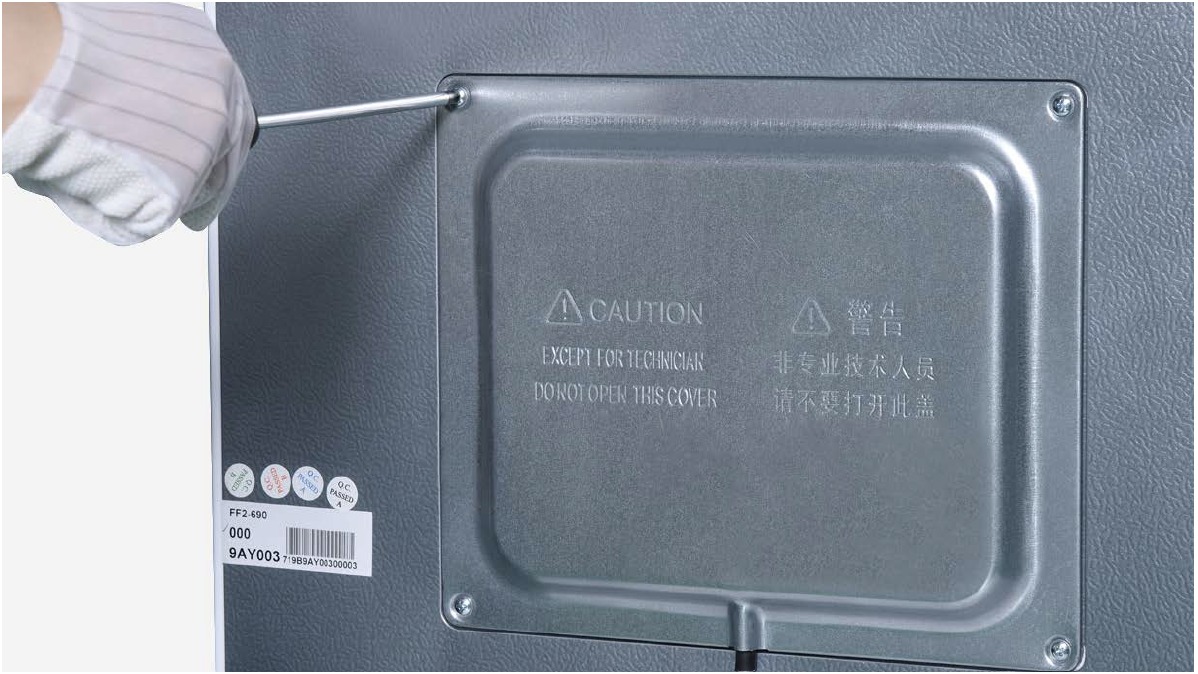
Step 2
Check if terminal in PCB area is pushed to final position.
If not, reinsert it to final position.

Step 3
Set multimeter to resistance gear.
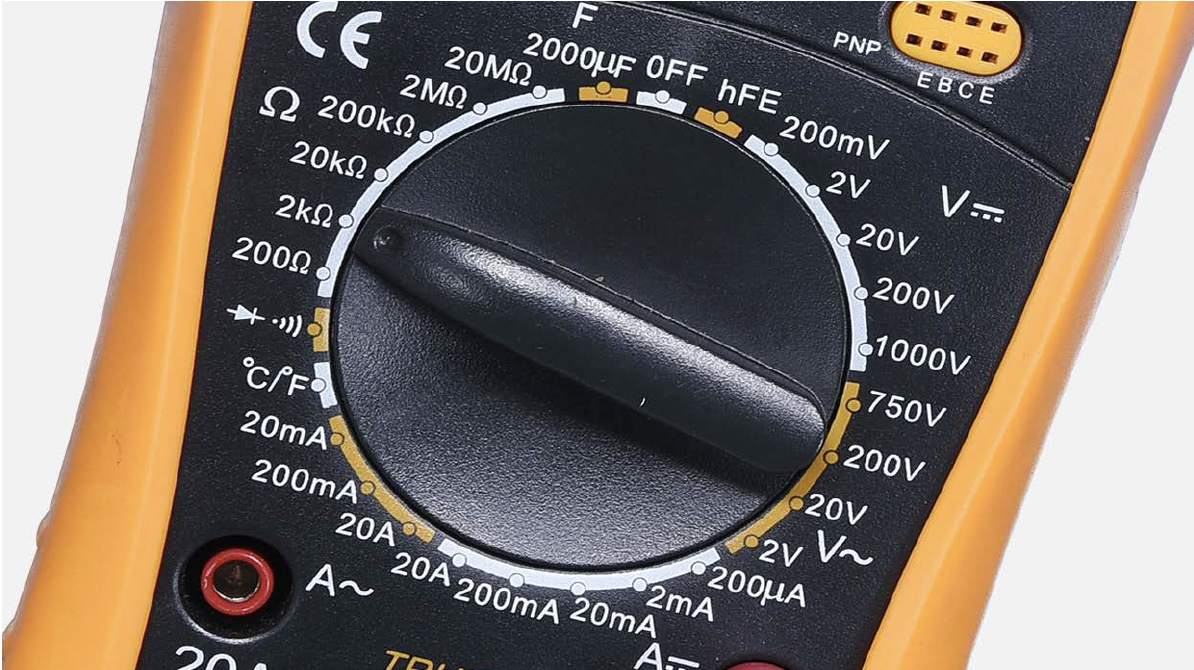
Step 4
In PCB area, measure the resistance of defrost temp. sensor with a multimeter.
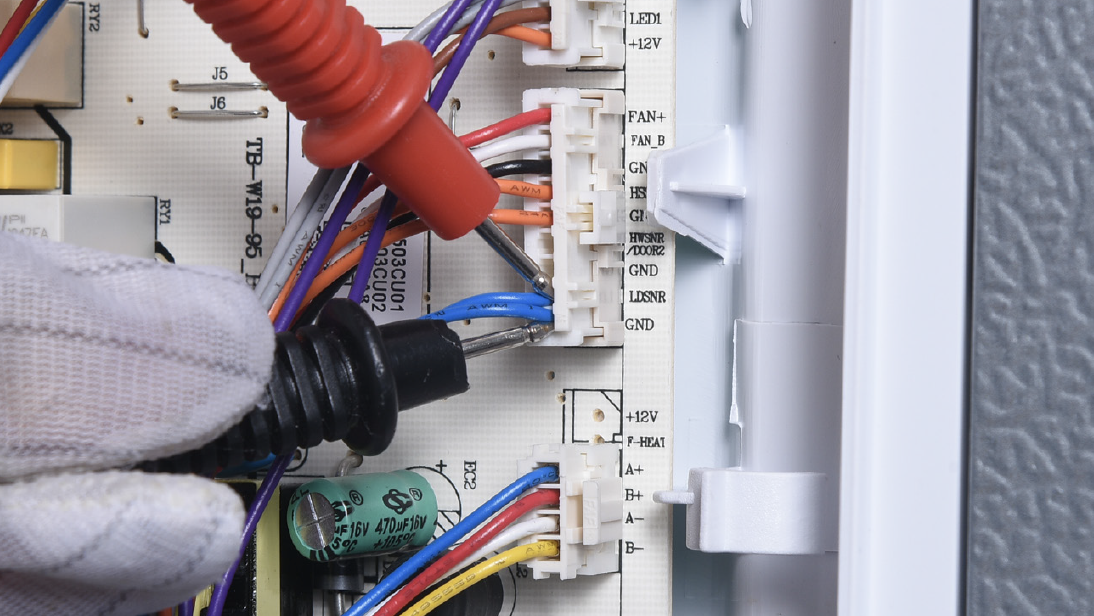
Step 5
Take note of value.
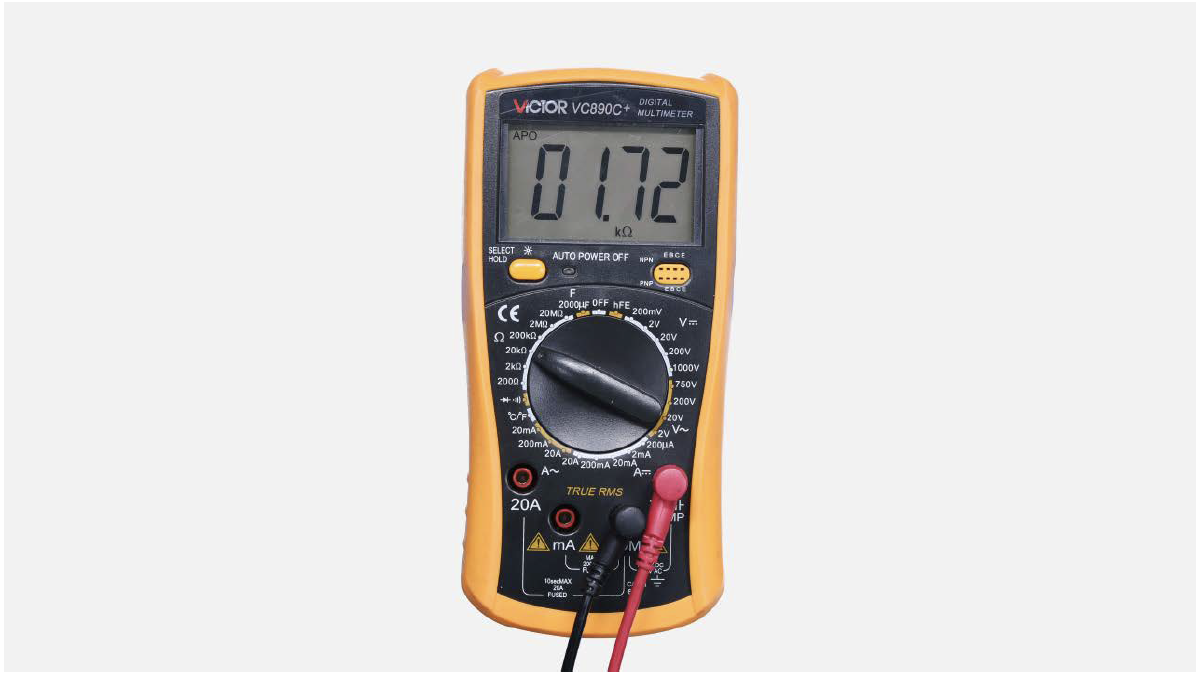
Step 6
Measure the temperature
of freezer air duct, near the
defrost temp. sensor.
Use measured temperature
to find the standard
resistance value in
Temperature-Resistance
Chart of Sensor.
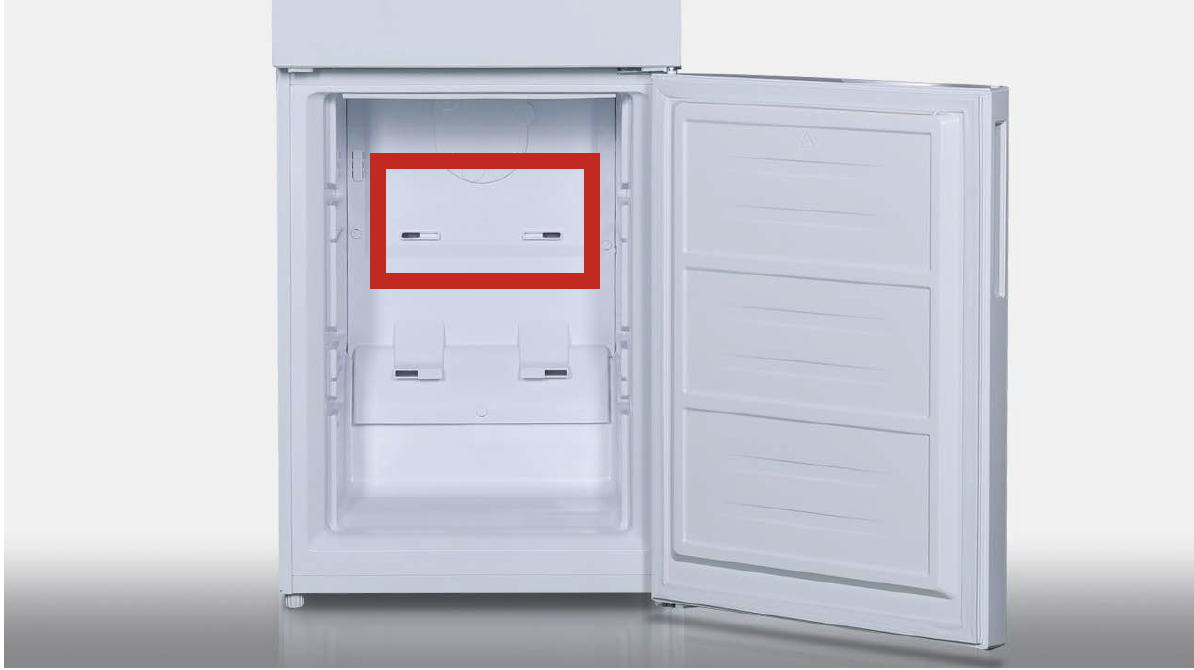

DIAGNOSIS 1
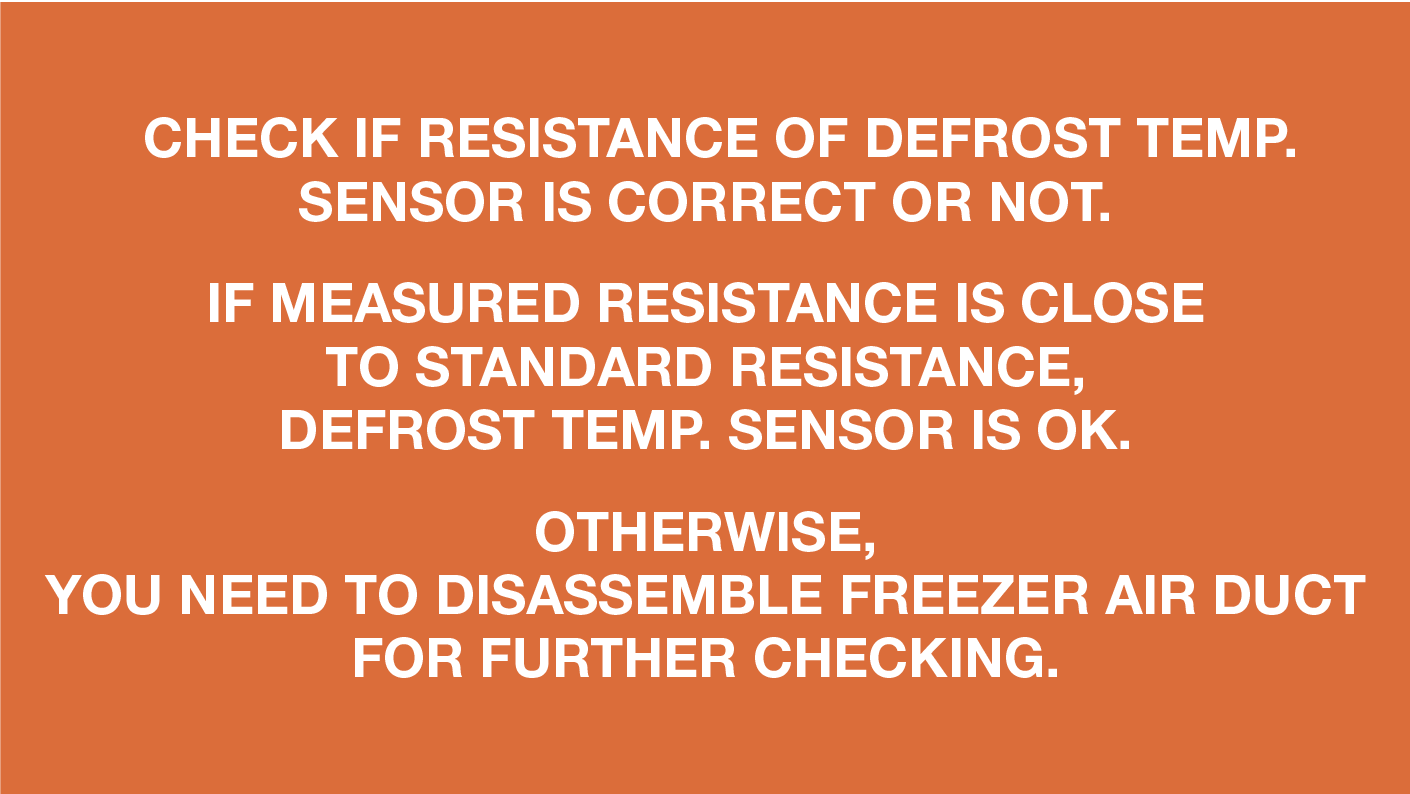
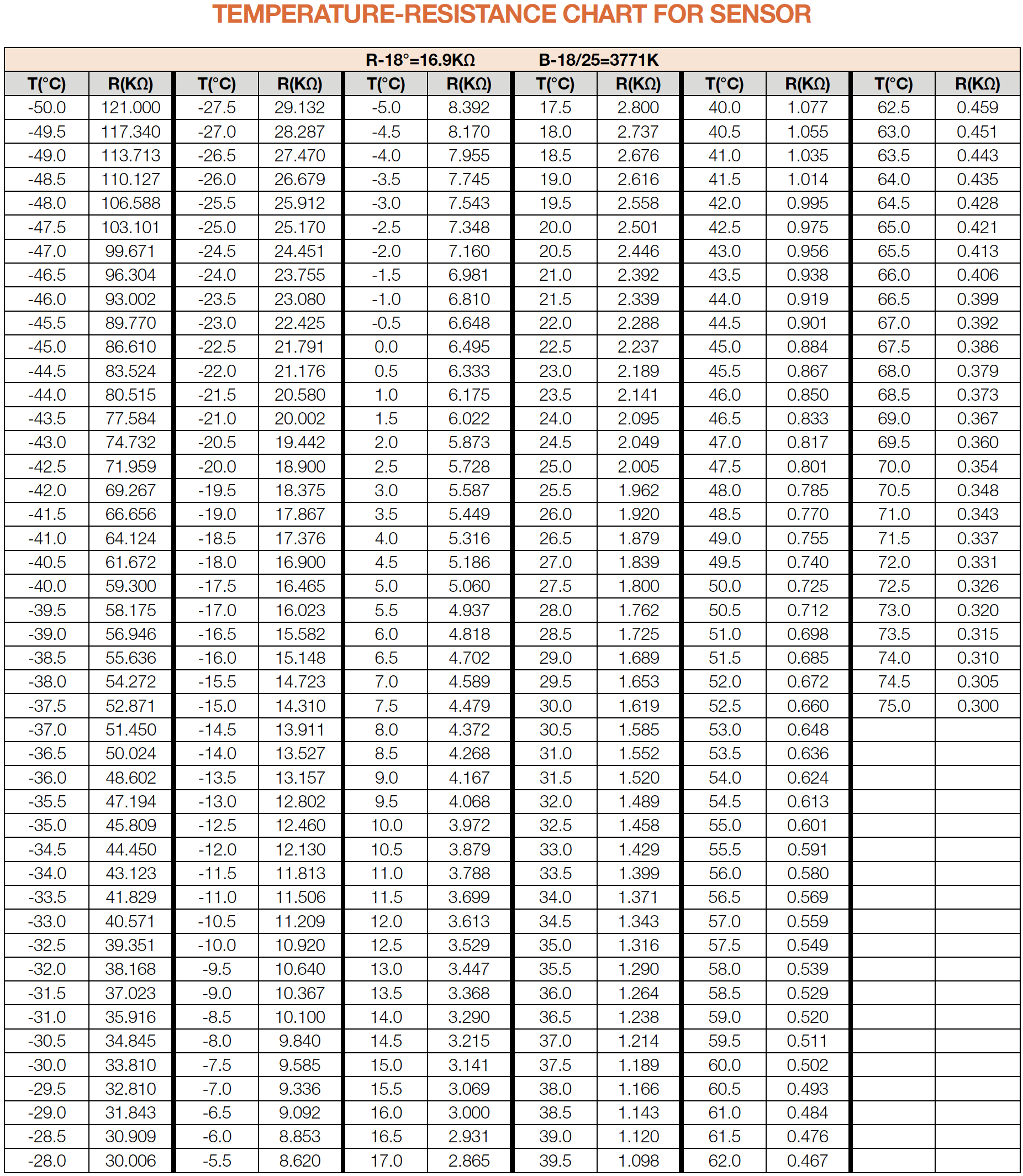

PROCEDURE 1
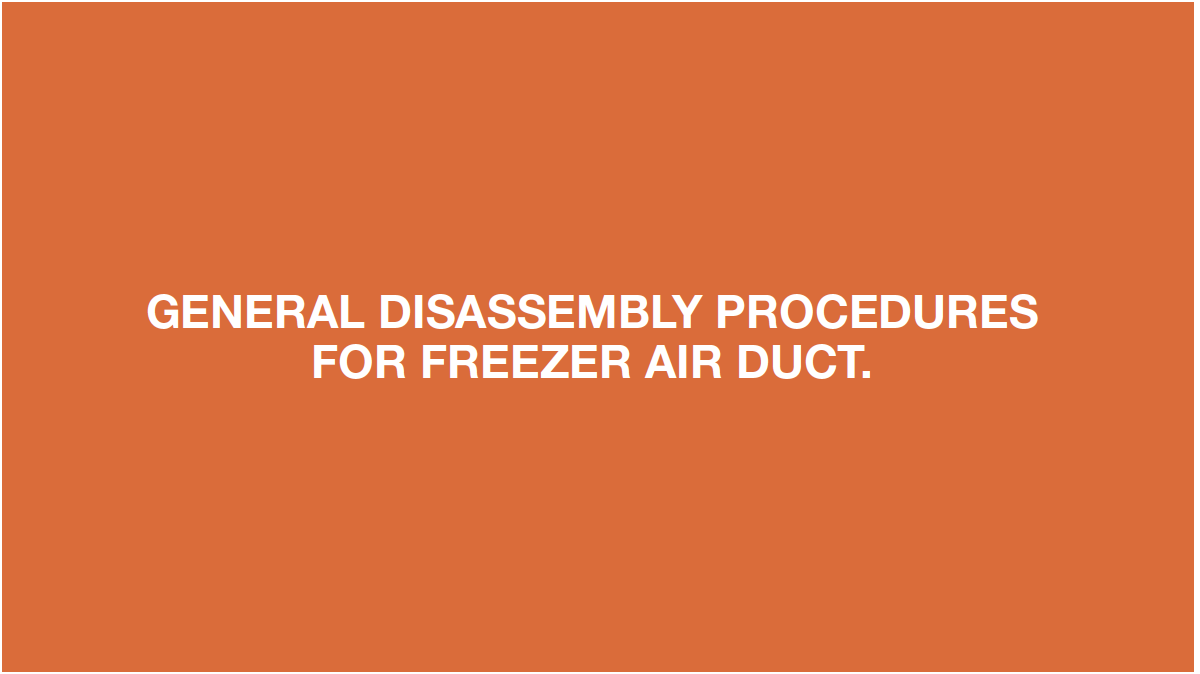
Step 1
Remove all freezer drawers.
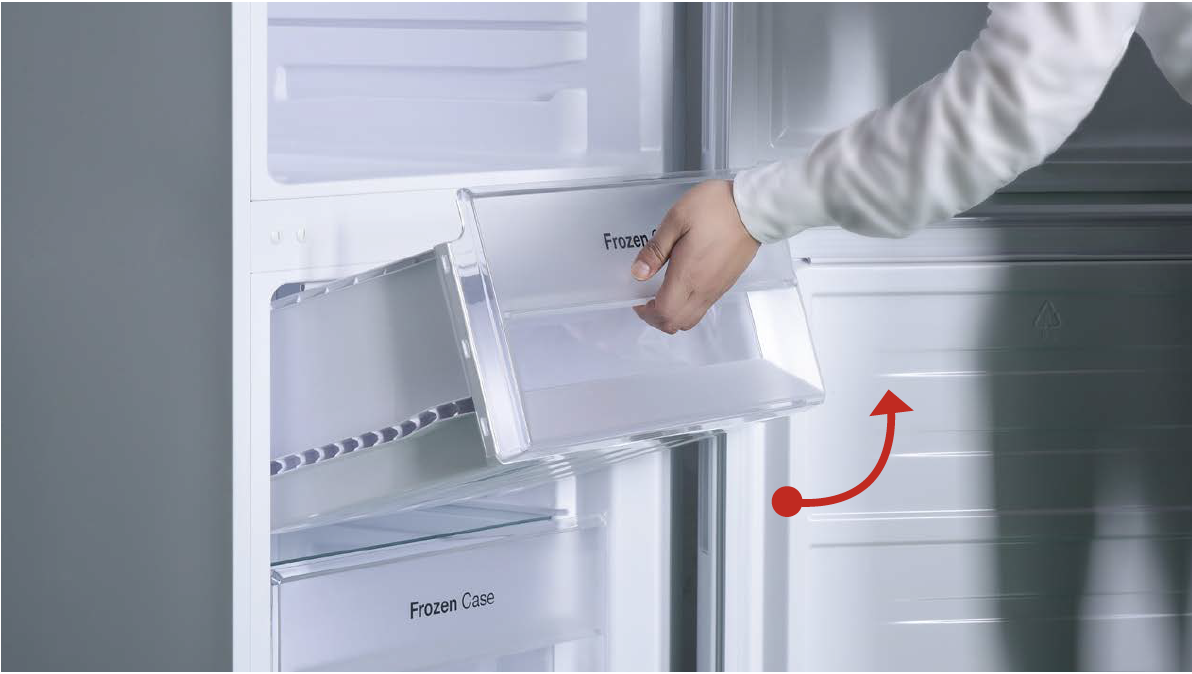
Step 2
Remove all glass shelves.
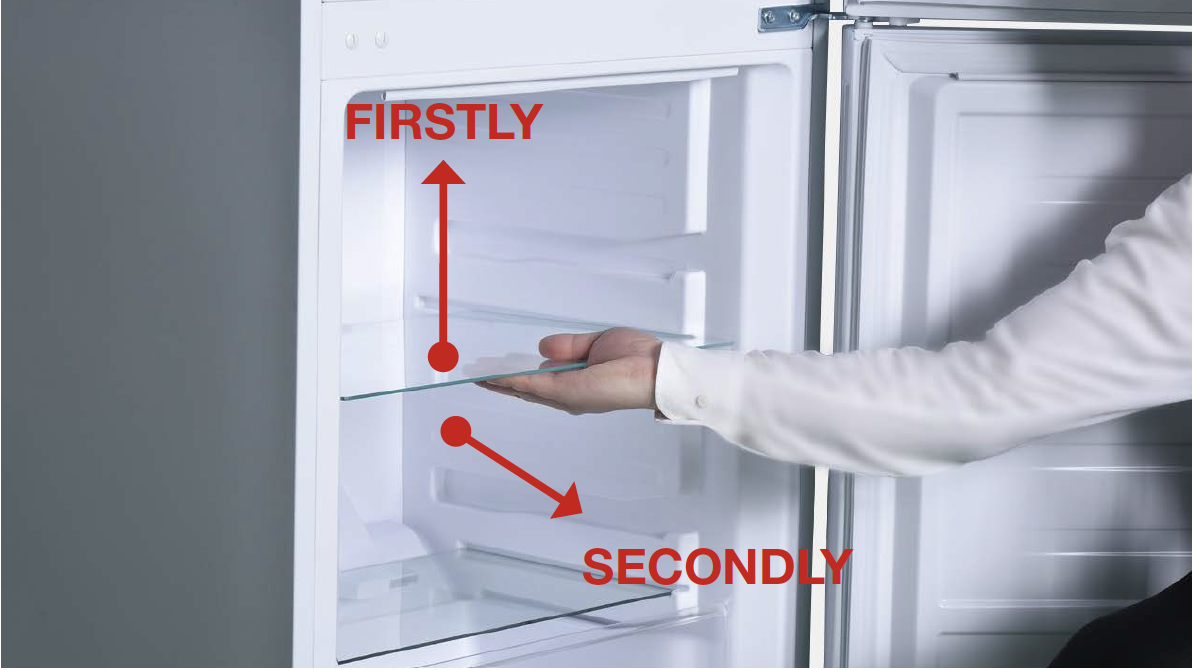
Step 3
Unscrew the screws on
air duct.
a. Check the freezer air
duct to find the three
screw covers.
b. Remove the screw
covers (total of three)
on the air duct with
slotted screw driver.
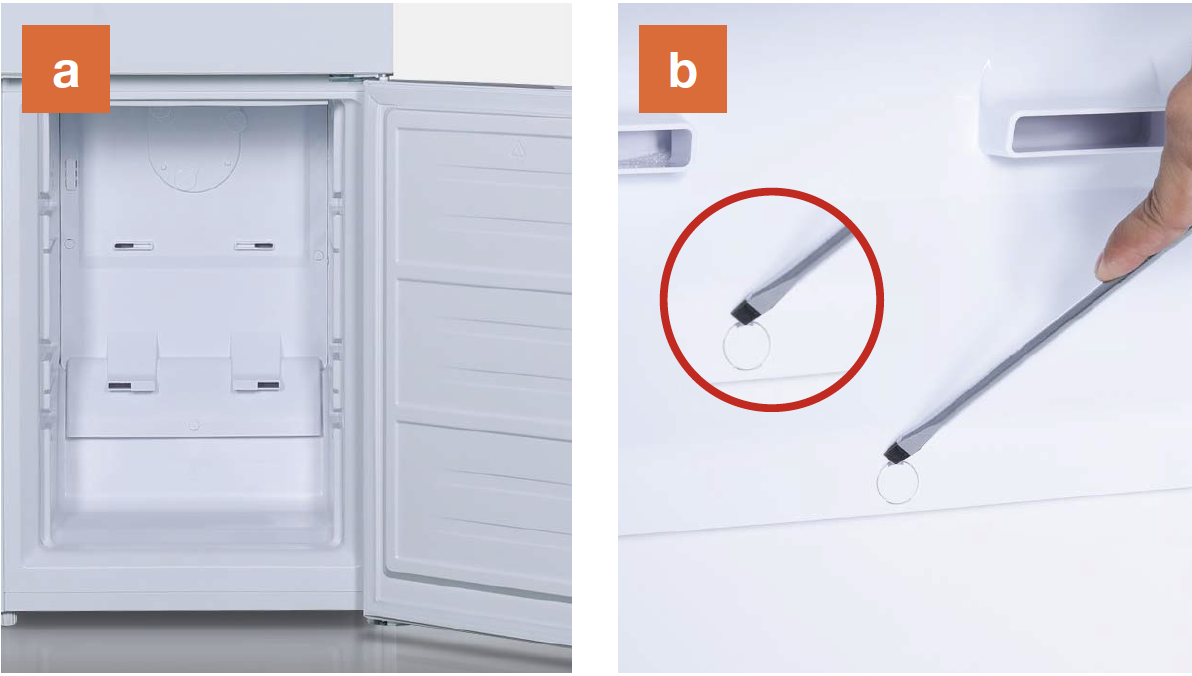
c. Unscrew the screws (total three) with Cross-head screw driver.
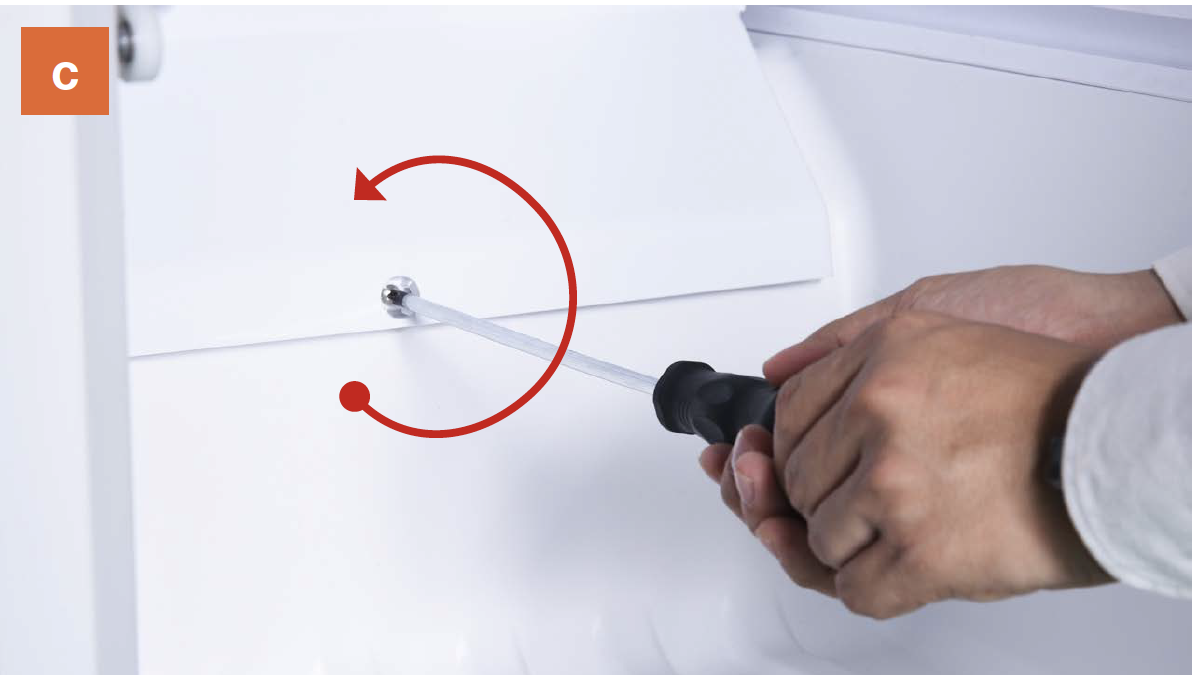
Step 4
Dismantle the air duct.
a. Catch the bottom of air duct and pull down the air duct.
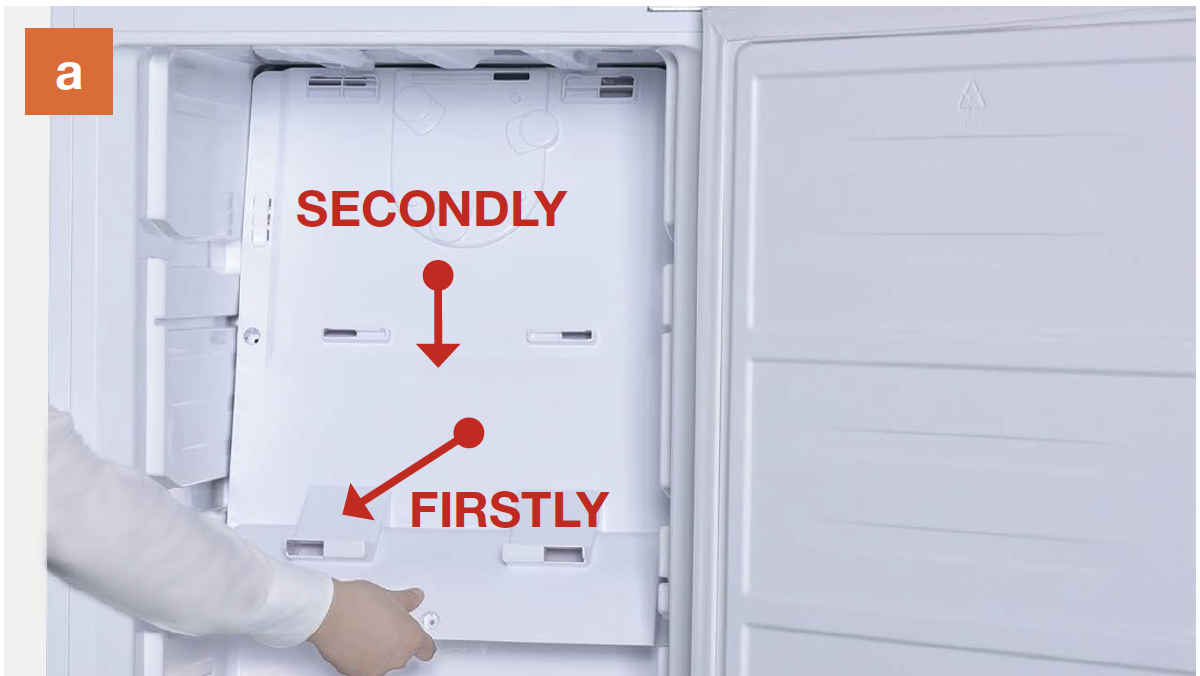
b. Pay attention to the connectors when pulling out the air duct.
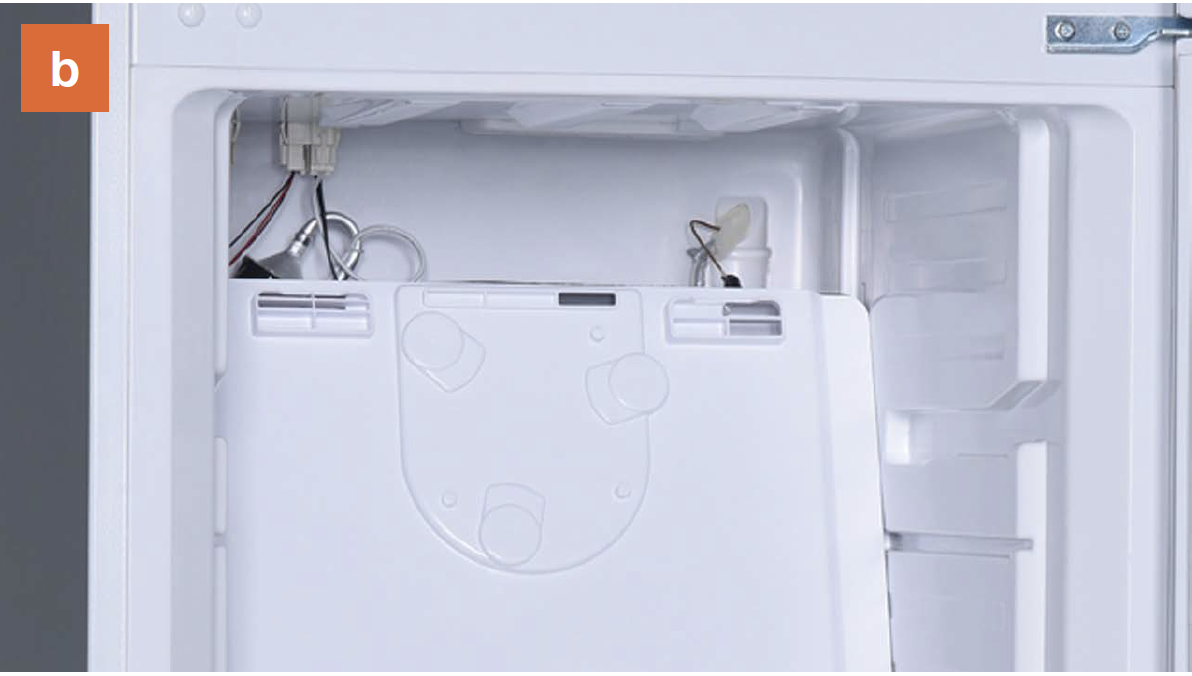
c. Disconnect the
terminal for fan motor.
Disconnect the
terminal for freezer
temp. sensor.
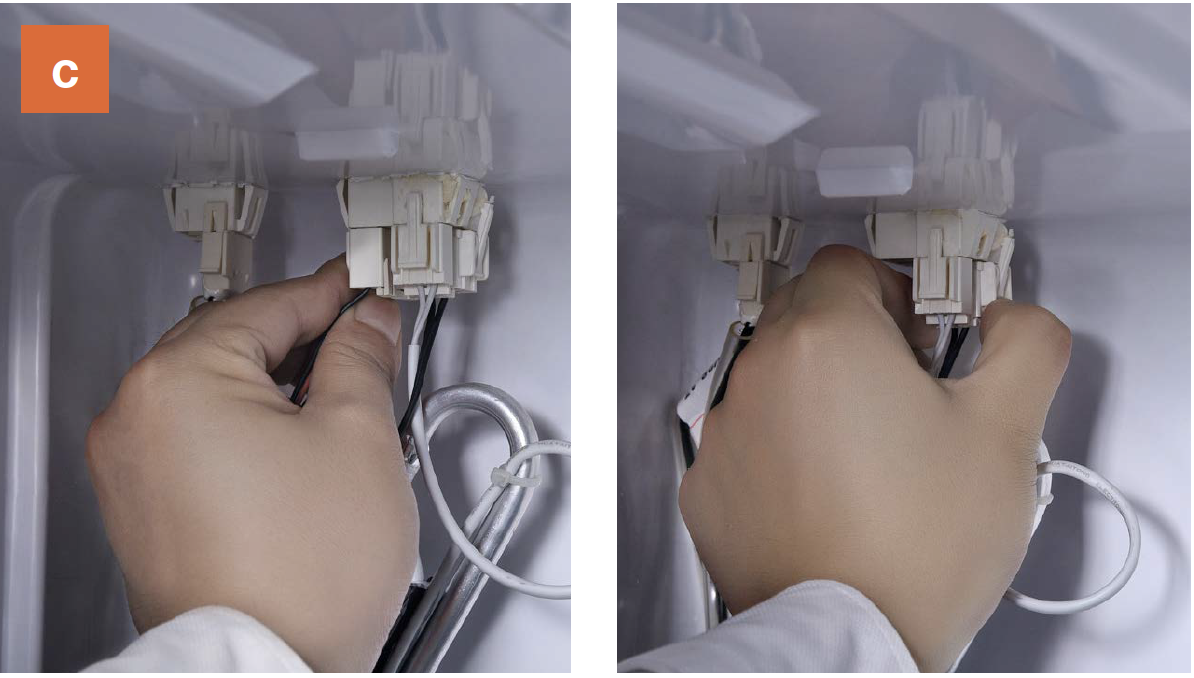
d. Move the air duct out of the freezer compartment.
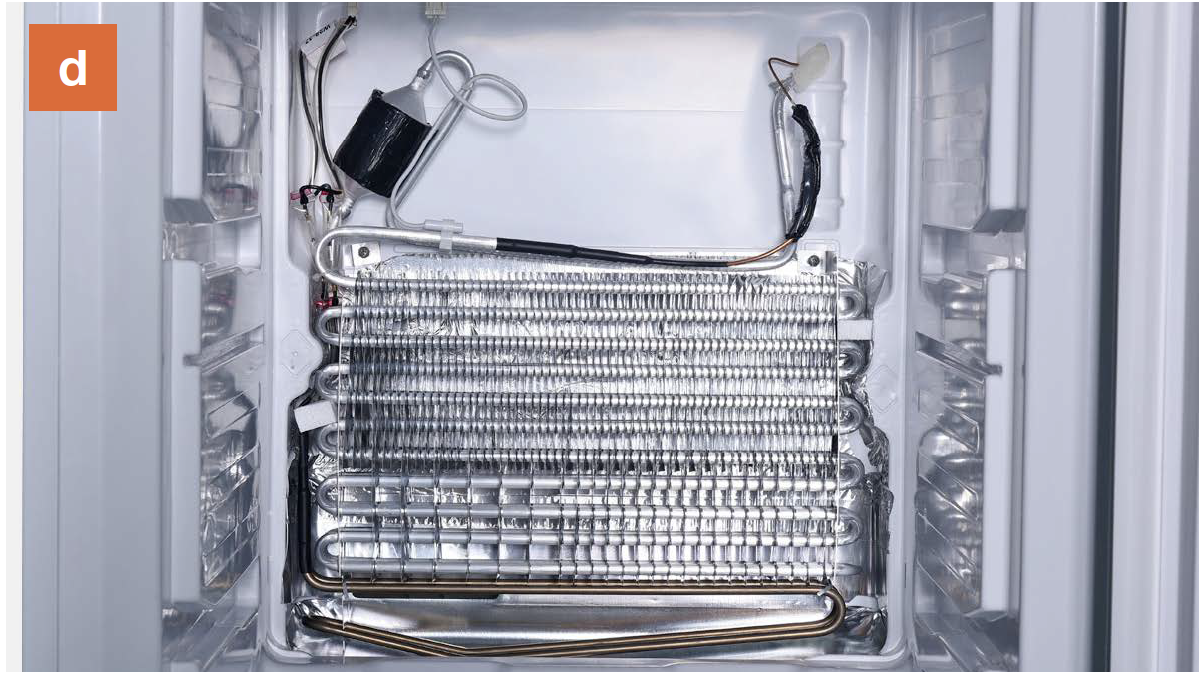

CHECK AND TEST 2
Step 1
Check if terminal is inserted to final position.
If not, please re-insert it to final position.
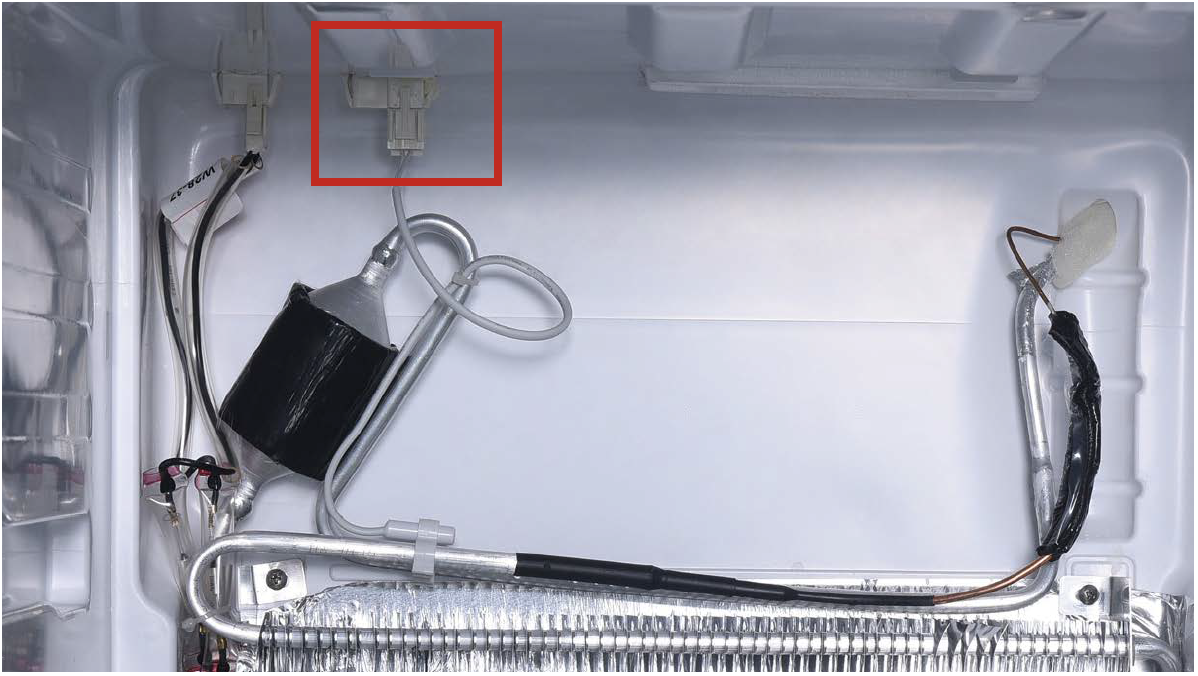
Step 2
Check if sensor is attached in proper position, as shown in picture.
If not, correct it.
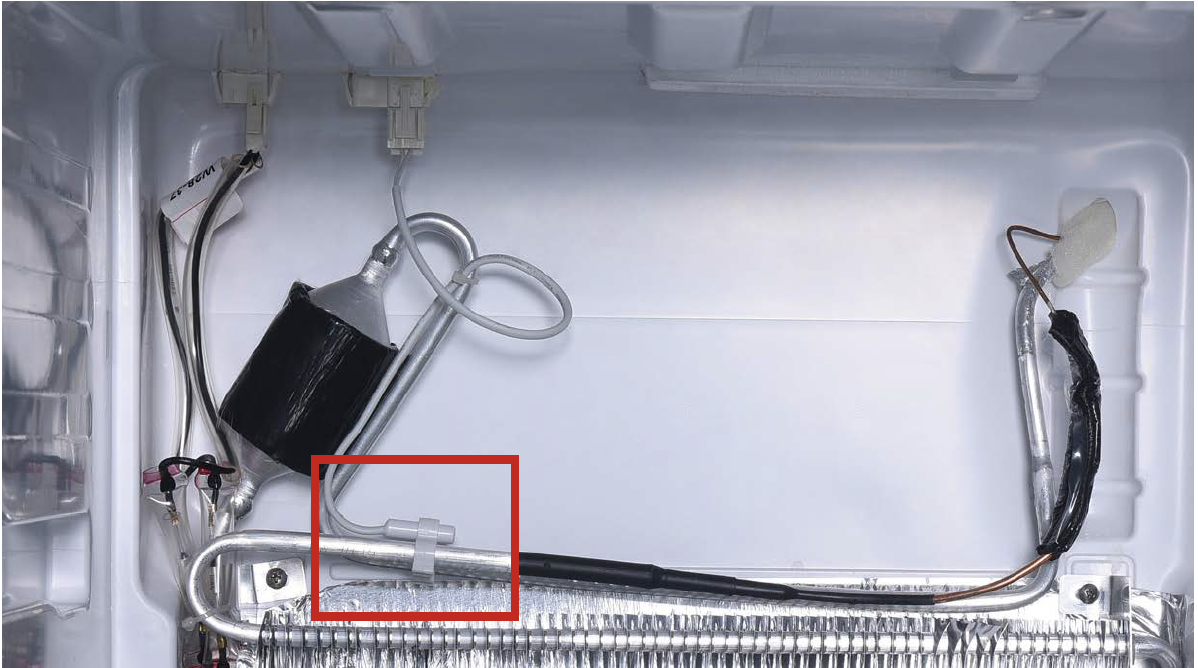
Step 3
Check if wire of defrost sensor is broken.
If yes, replace it with a new one.
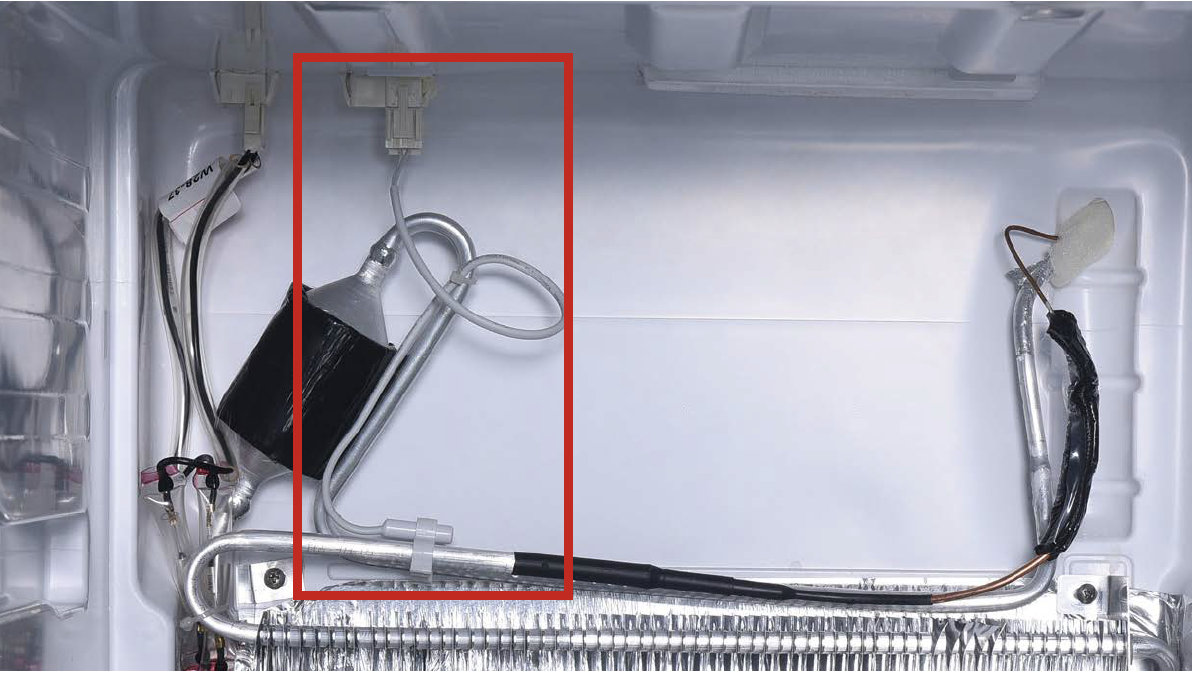
Step 4
Disconnect terminal of defrost temp. sensor.
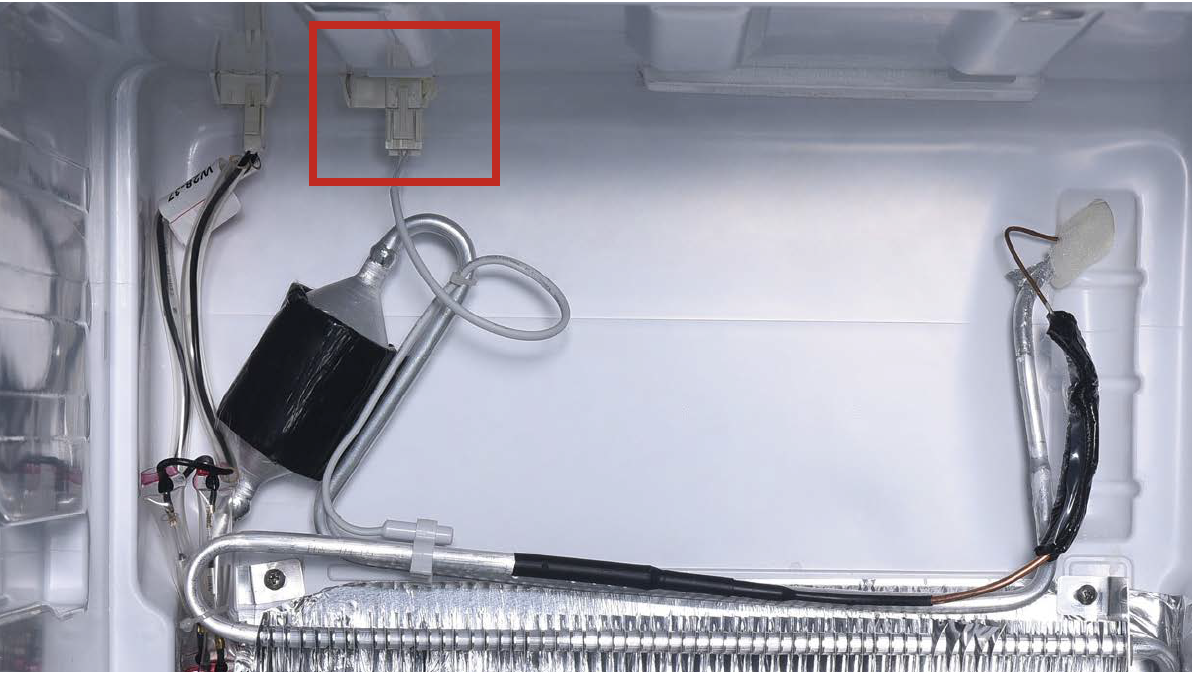
Step 5
Check if the terminal is stuffed with foam.
If so, use tweezers to smash it and remove.
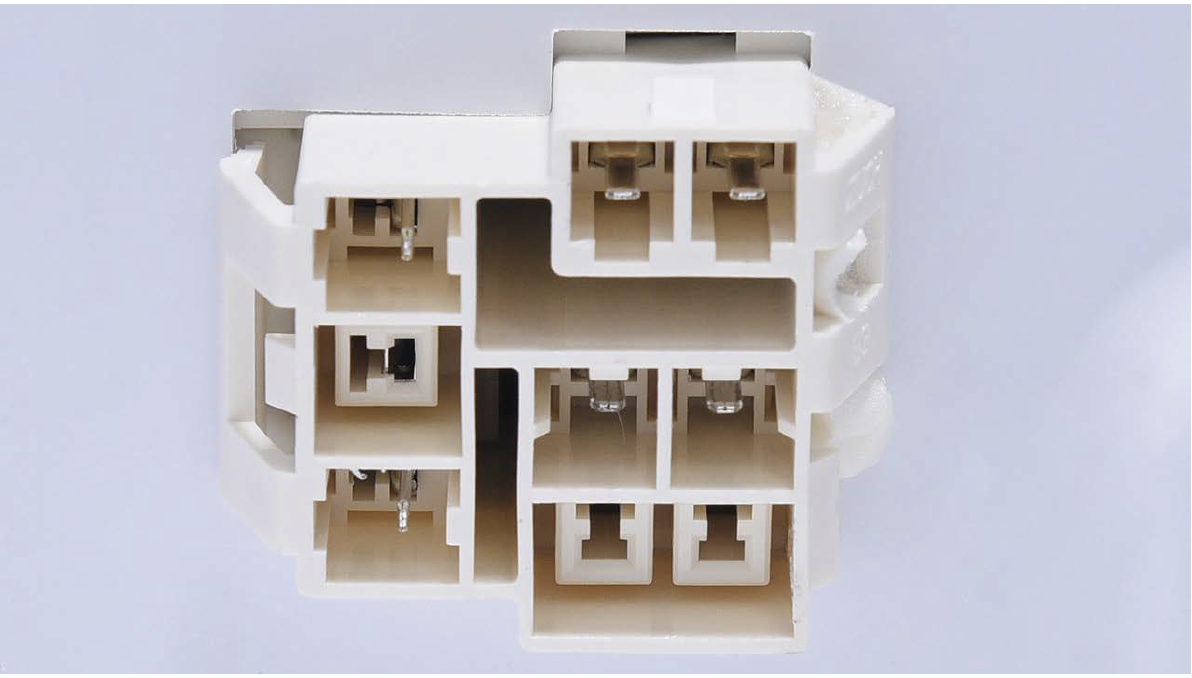
Step 6
Measure resistance of defrost temp. sensor from terminal in freezer, and take note of it.
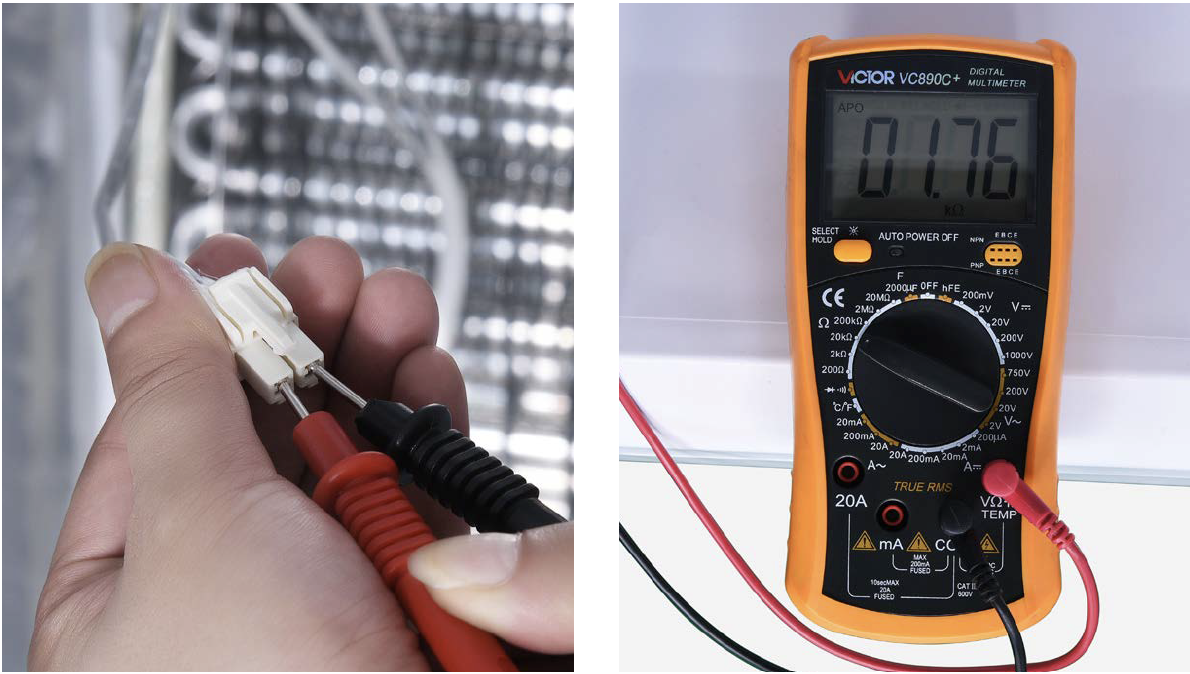
Step 7
Measure the temperature of defrost temp. sensor.
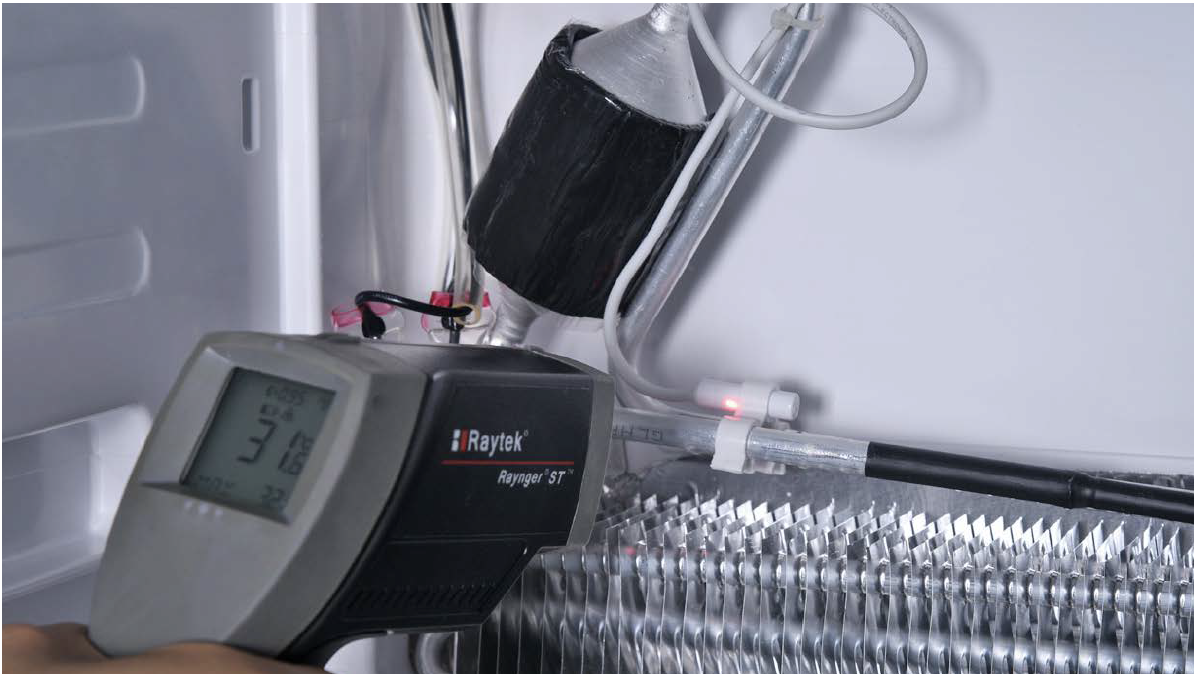

DIAGNOSIS 2
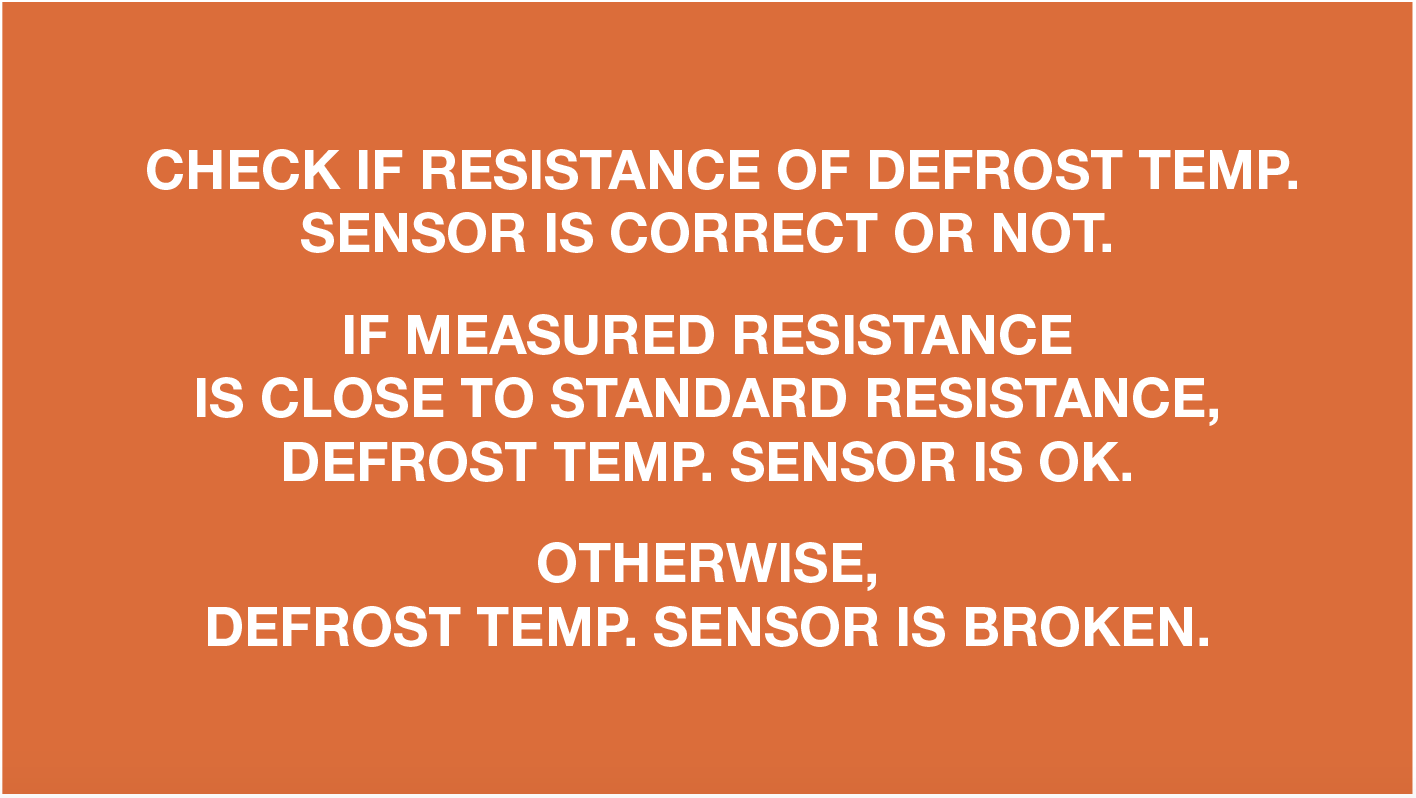
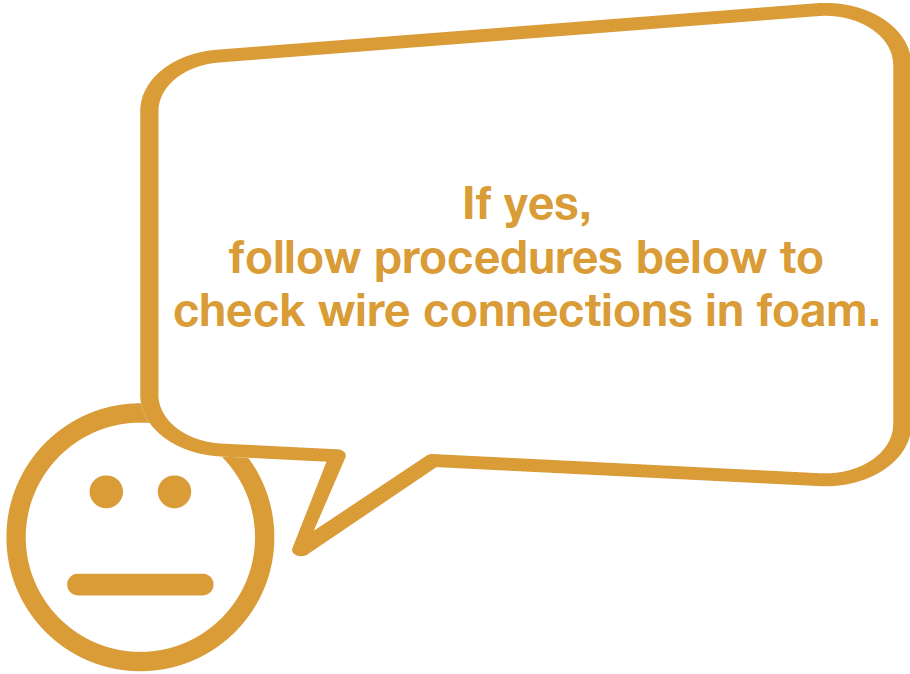
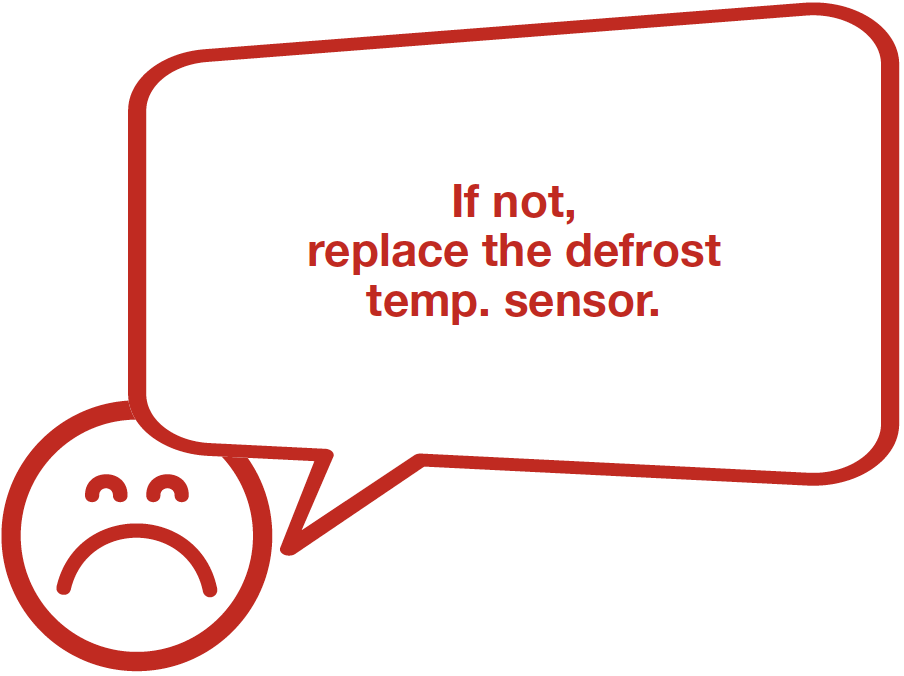

CHECK AND TEST 3
Step 1
Set multimeter to resistance gear.
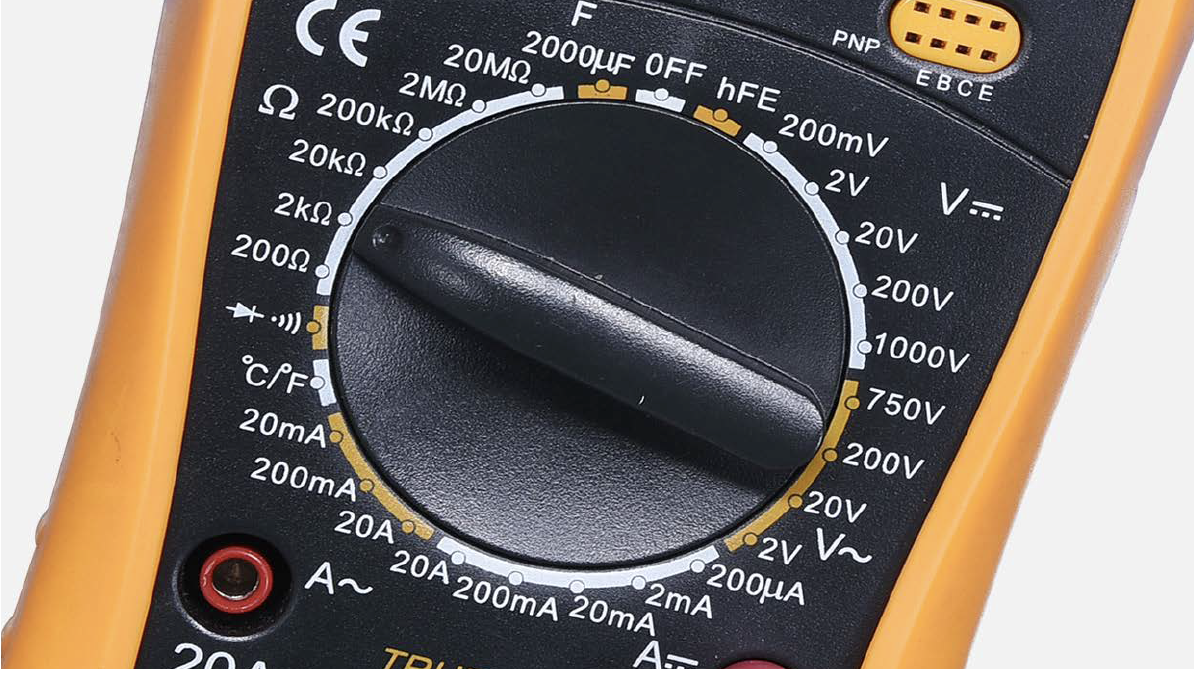
Step 2
Put detector into one end of wires in PCB area.
Put another detector into end of wires behind air duct.
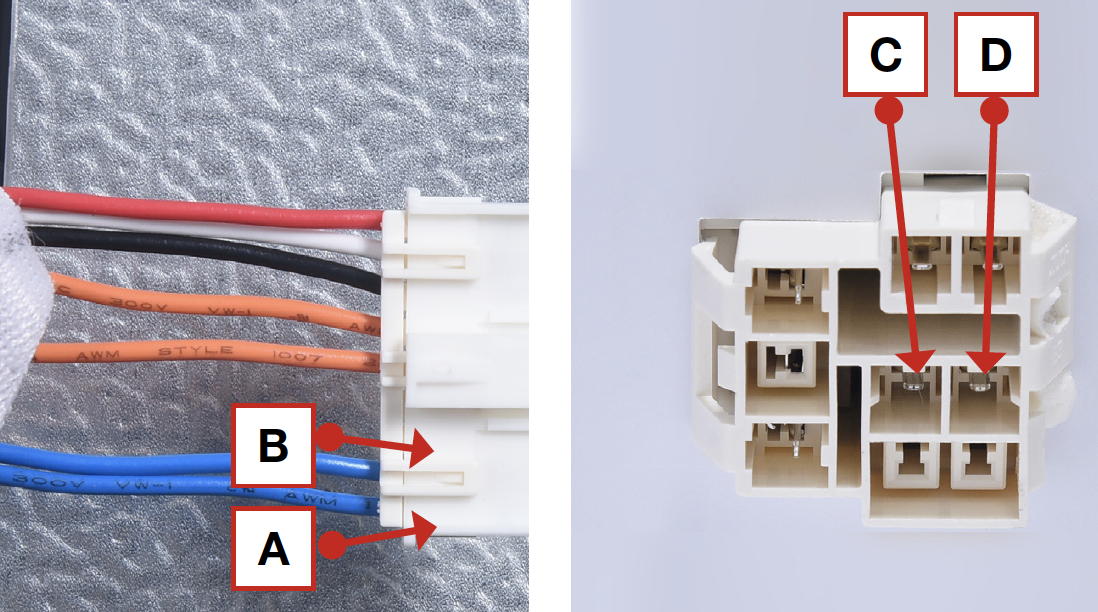

DIAGNOSIS 3
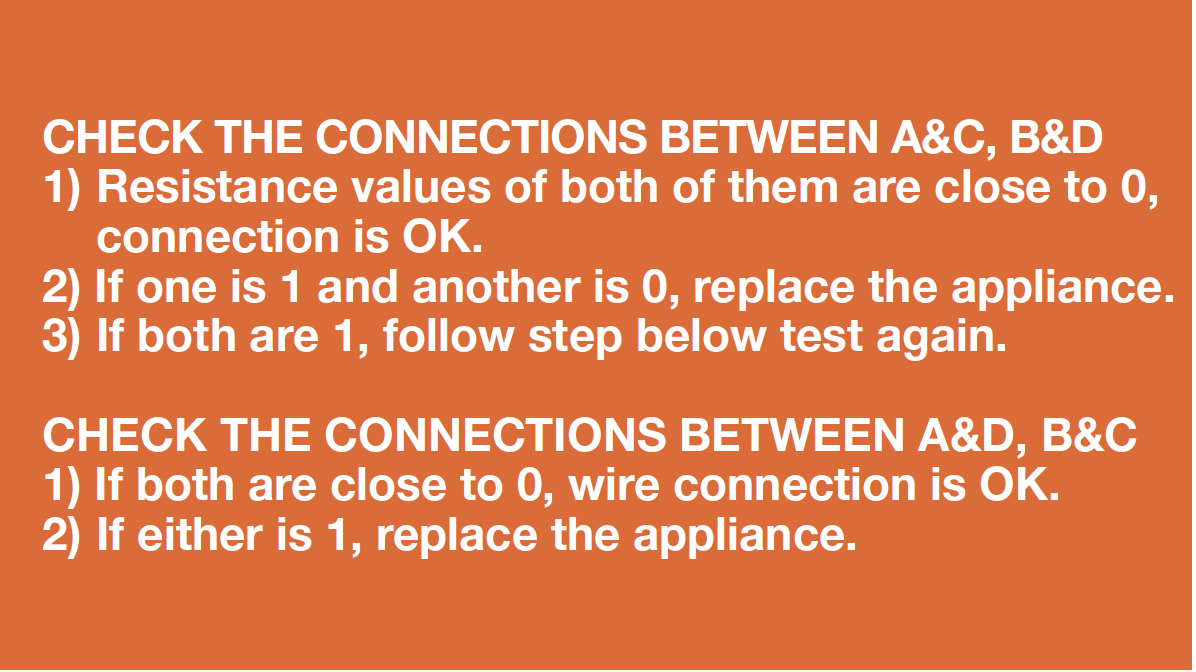
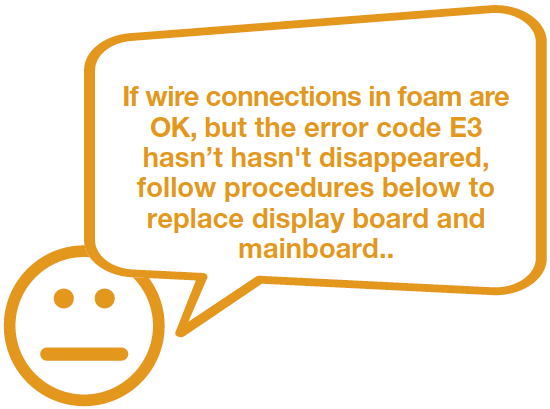
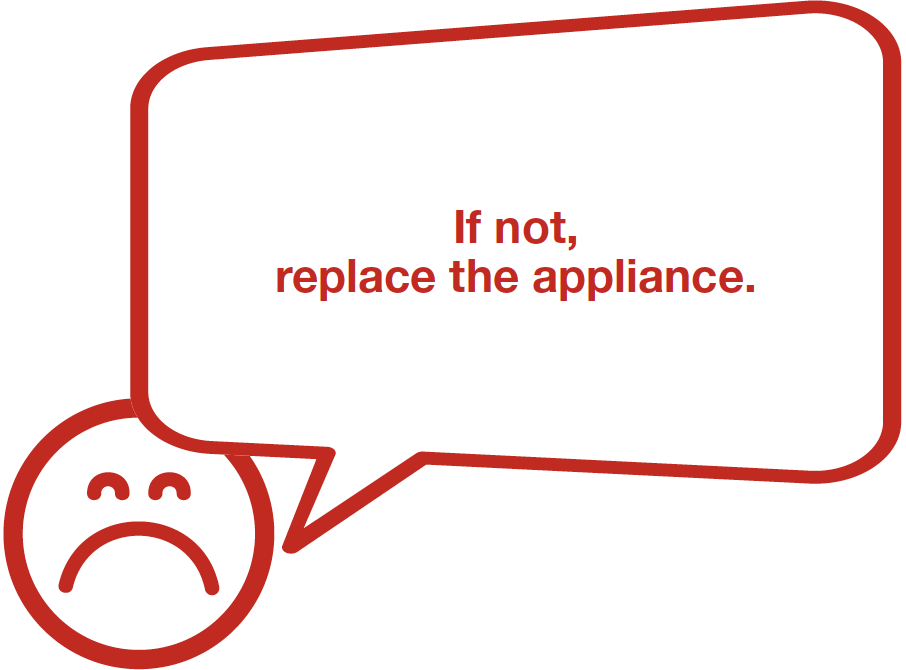


PROCEDURE 2
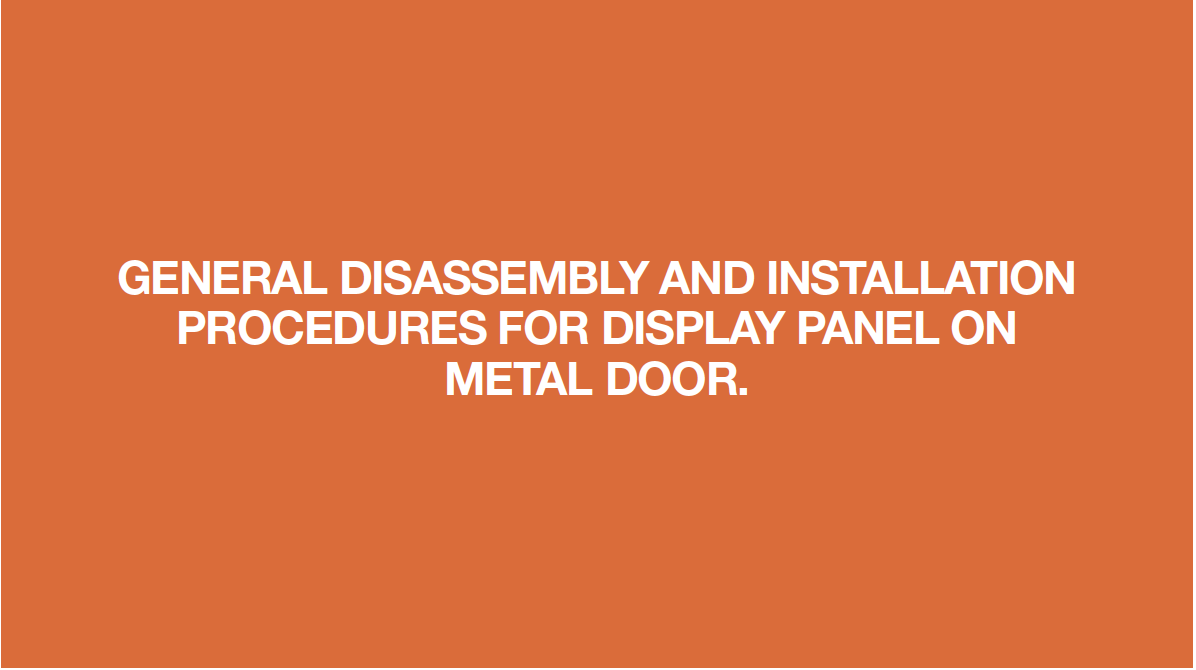
Step 1
Push a 6mm sucker onto display and turn the knob to strengthen suction force.
Step 2
Wrap a belt around knob to make it easier to pull out of display board.

Tips for installing display.
Tip 1
After connecting terminal, please use tape to fasten wires to avoid crushing with cover.
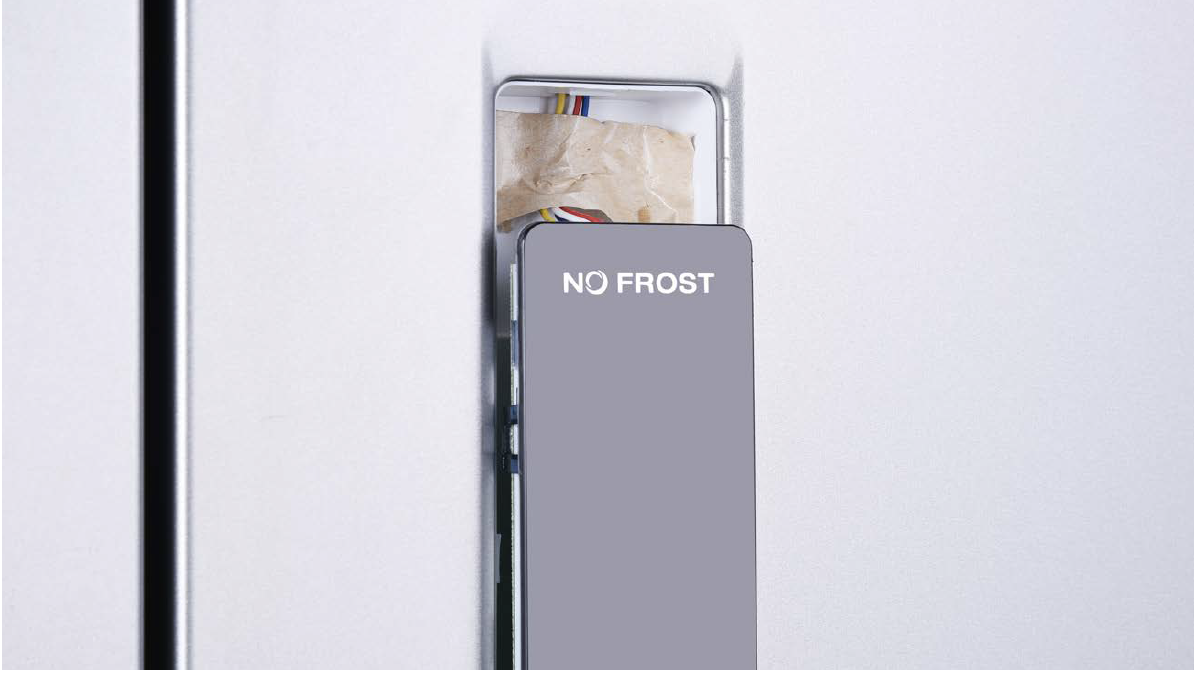
Tip 2
After putting display
into cavity, press edge
until you hear a clicking
sound, this means the
board is pushed into final
position.
Tip 3
Please press all buttons on display board to make sure it works well.
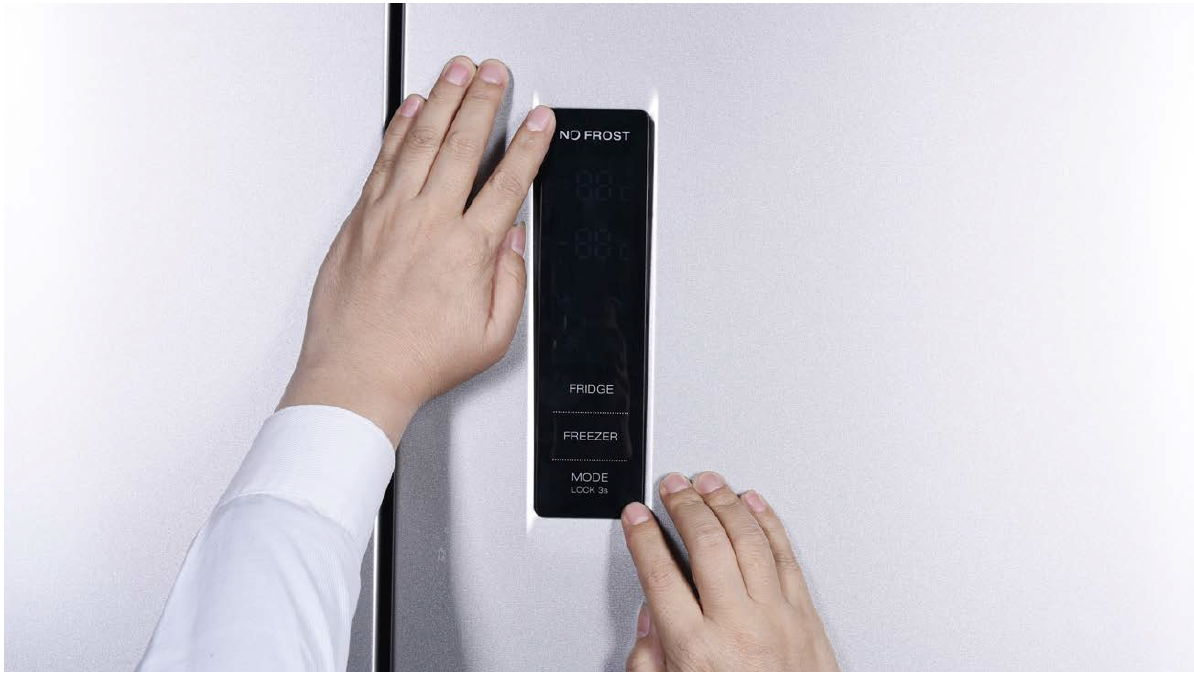

PROCEDURE 2
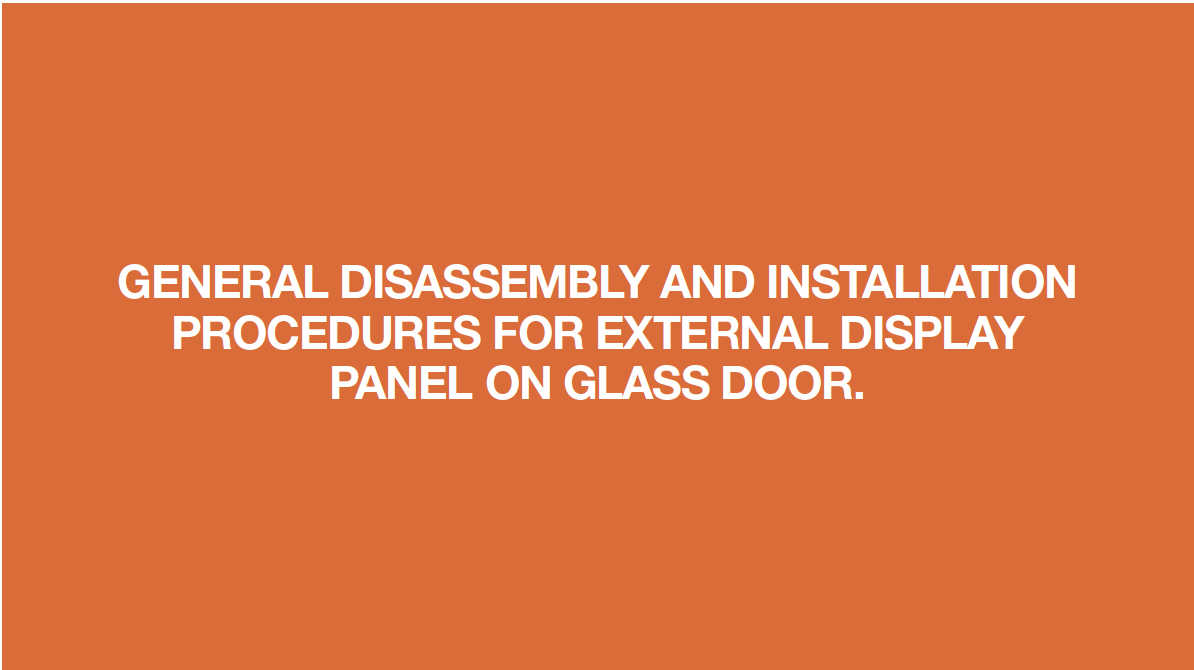
Step 1
Prize off the cover on door cap.
Step 2
Remove the screws (in total 2).
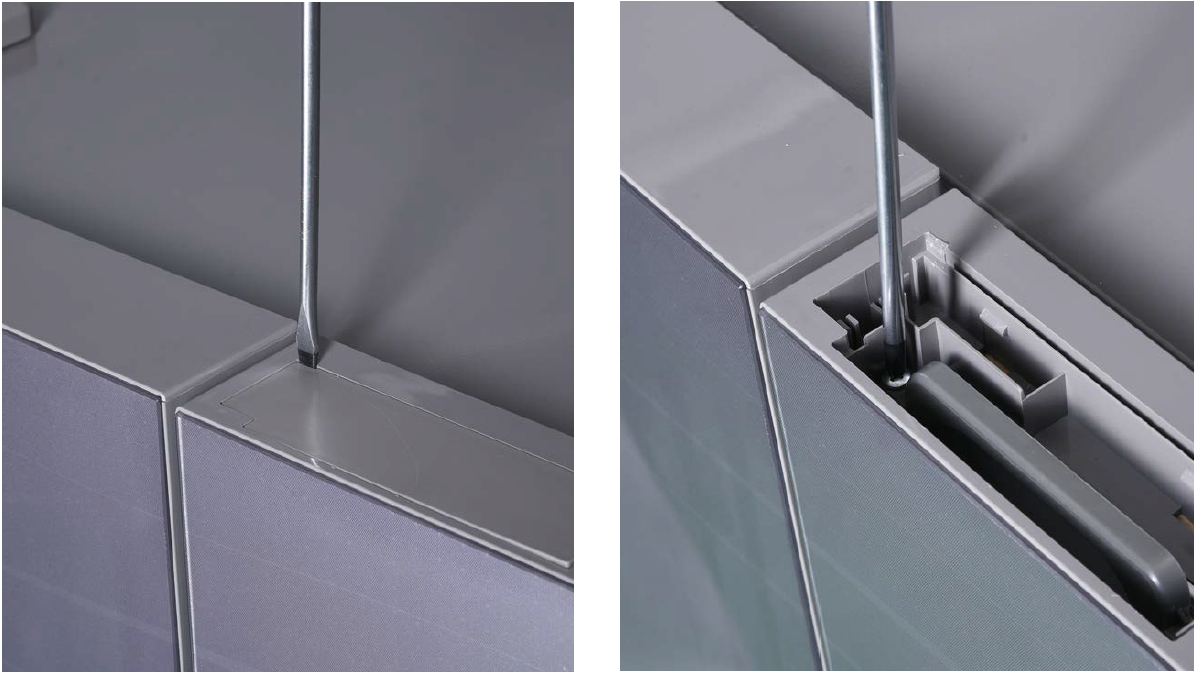
Step 3
Pull out the plastic.
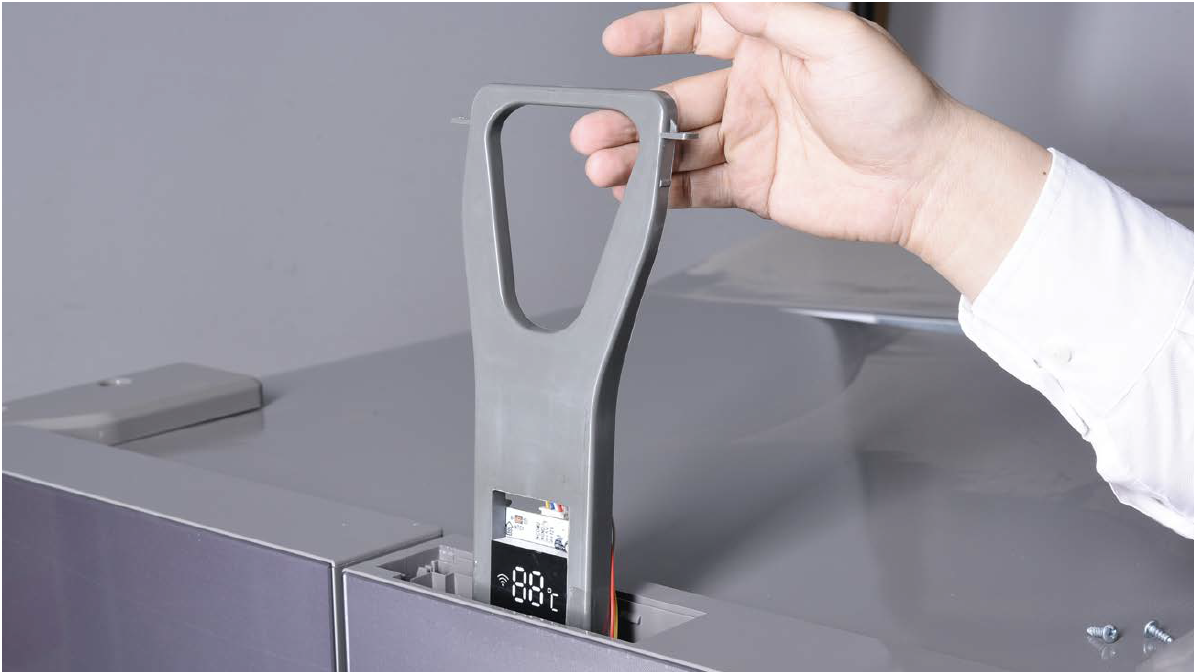
Step 4
Disconnect the terminal for display panel.
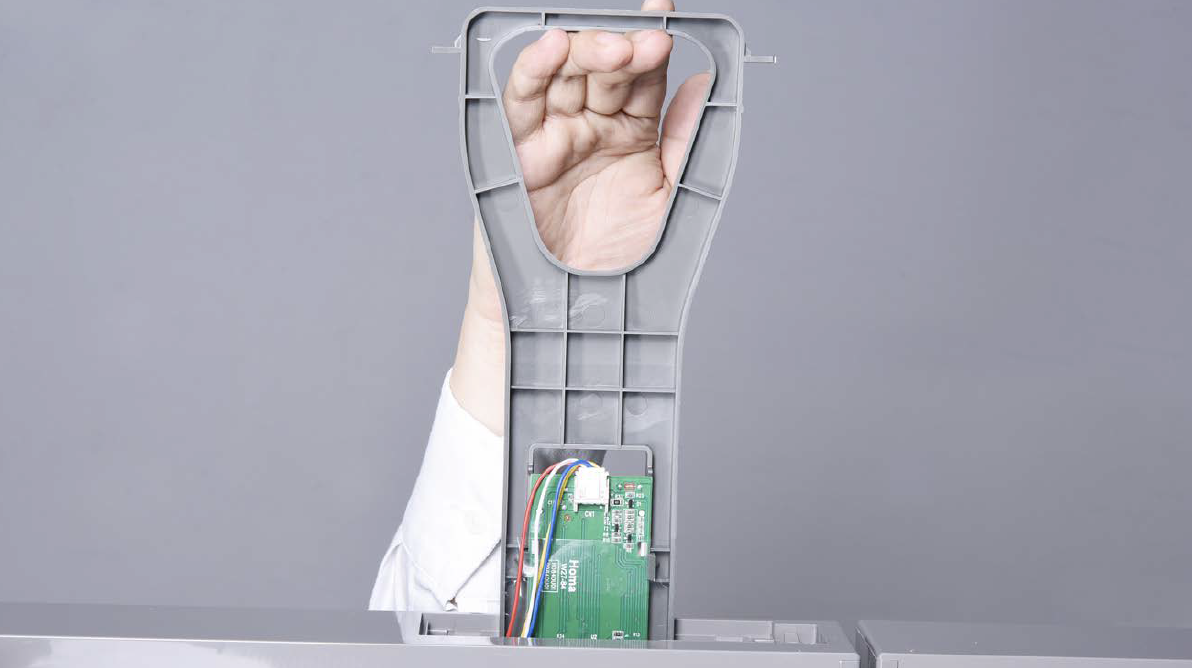
Step 5
Remove tape.
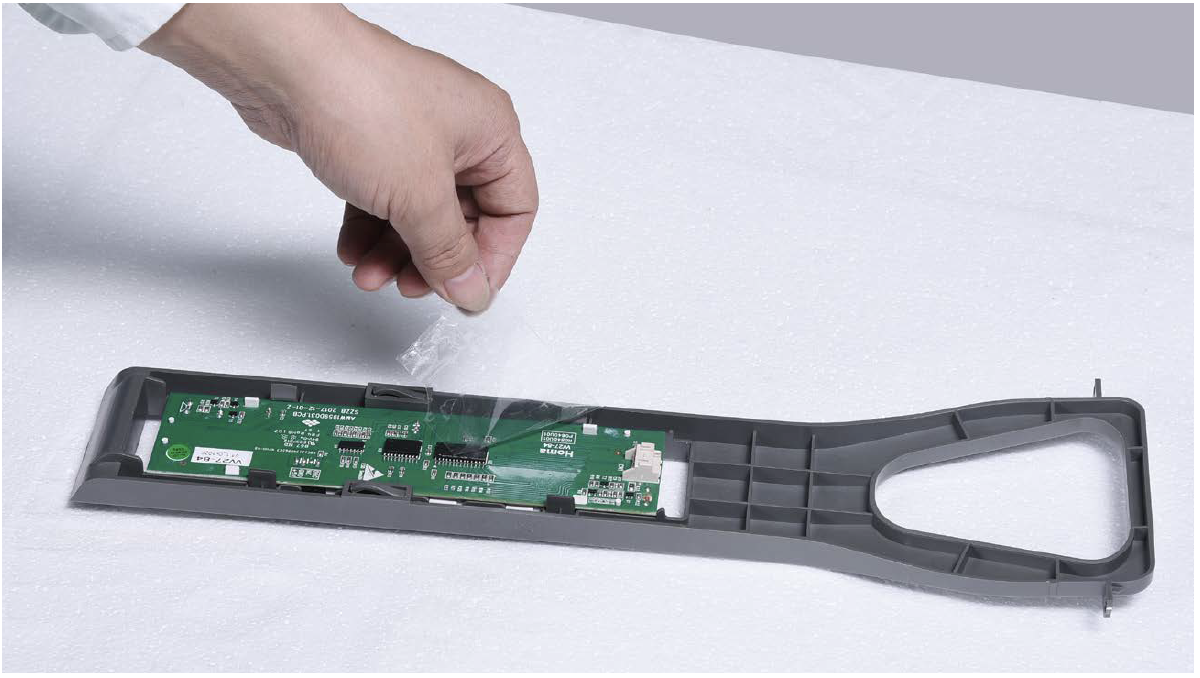
Step 6
Push the display away from the corner.
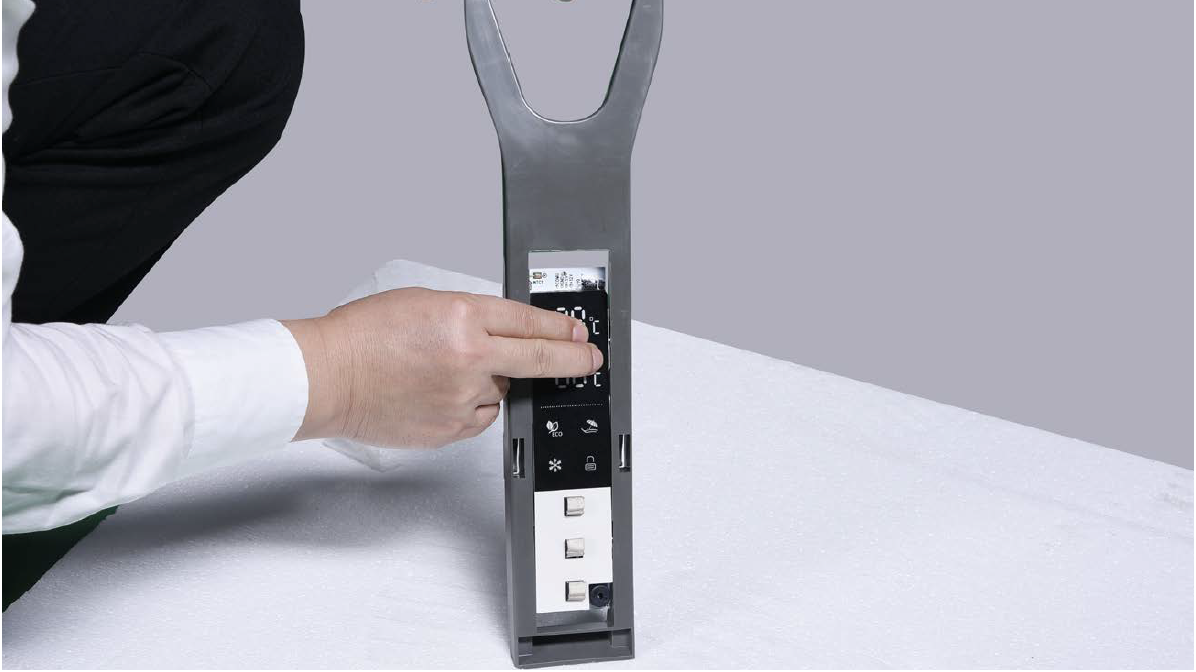
Reverse steps above
to install display
board.
Follow tips carefully:
Tip 1
Please press all buttons on display board to check if it works well or not. Make sure words and icons are clear.
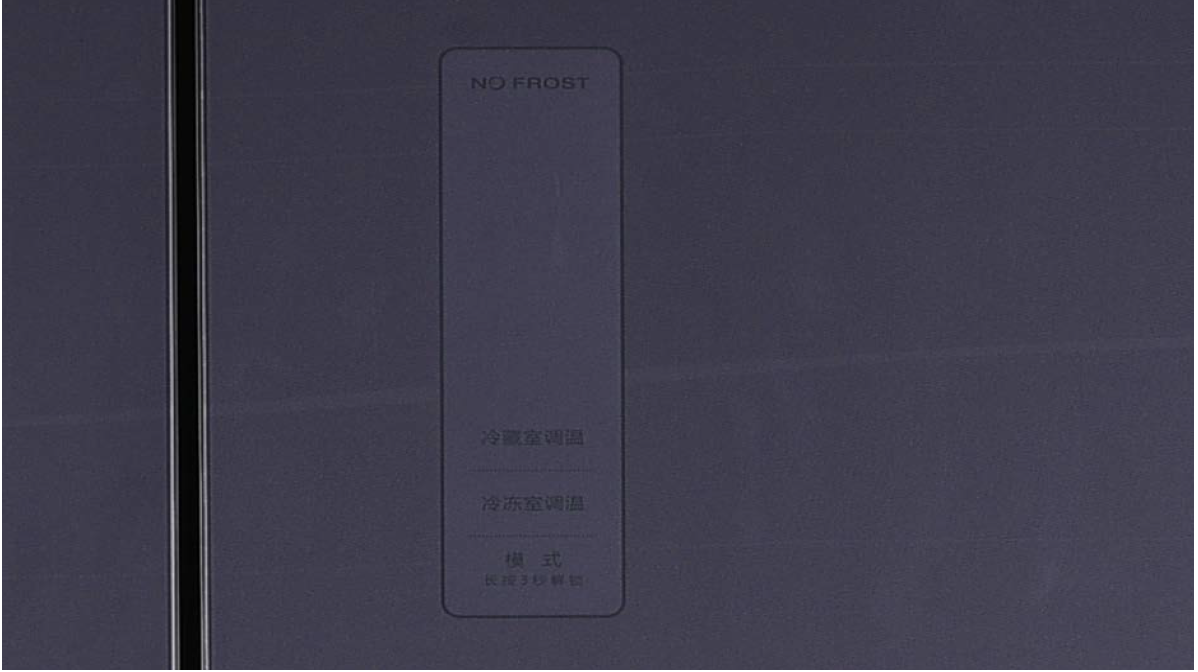
Tip 2
If not, disassemble it and put tape onto the point indicated by red circle.
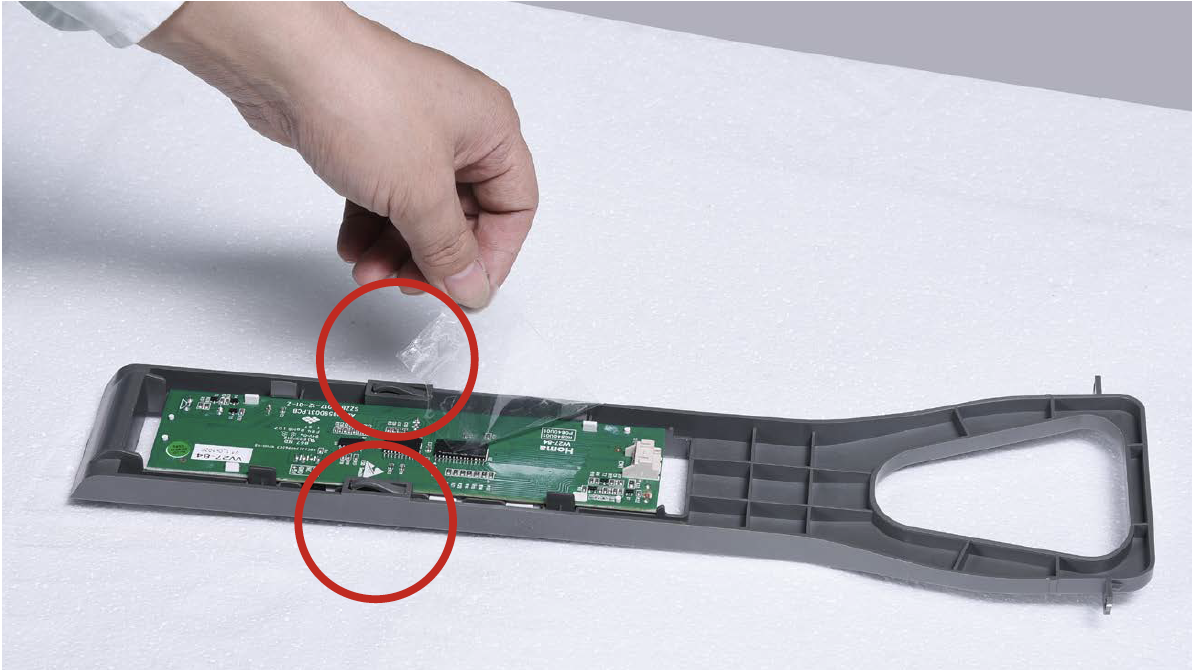

PROCEDURE 4

Step 1
Use slotter driver to prize off cover from back.Step 2
Unscrew with 6mm Cross-head screwdriver.
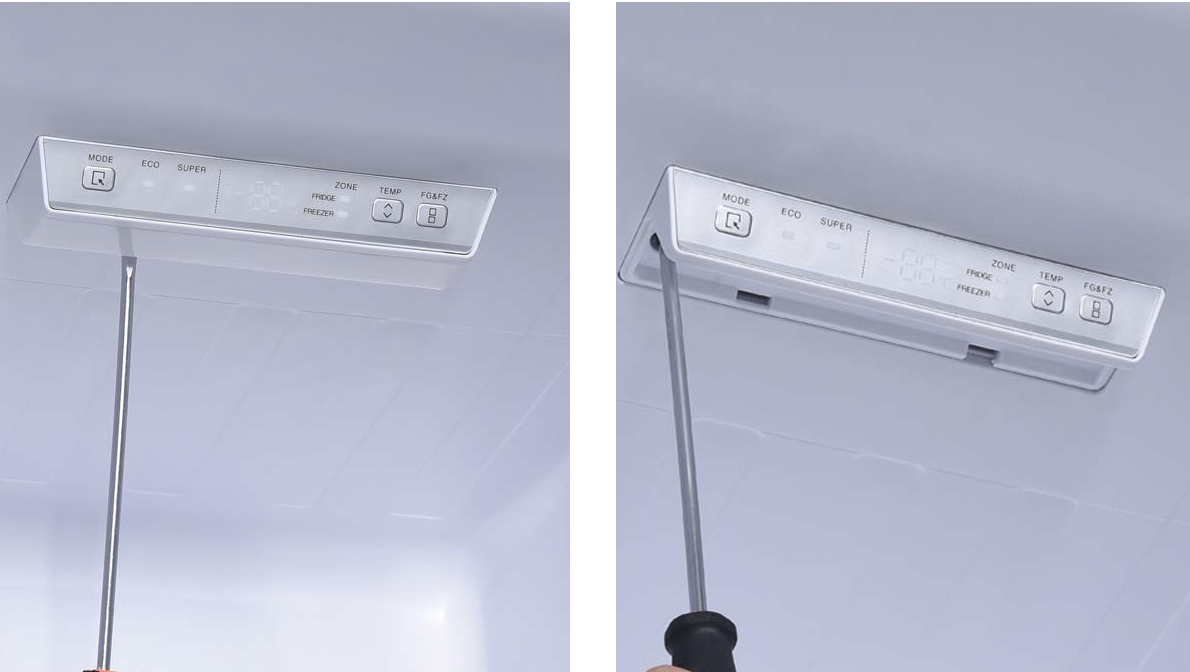
Step 3
Pull down the lamp box.
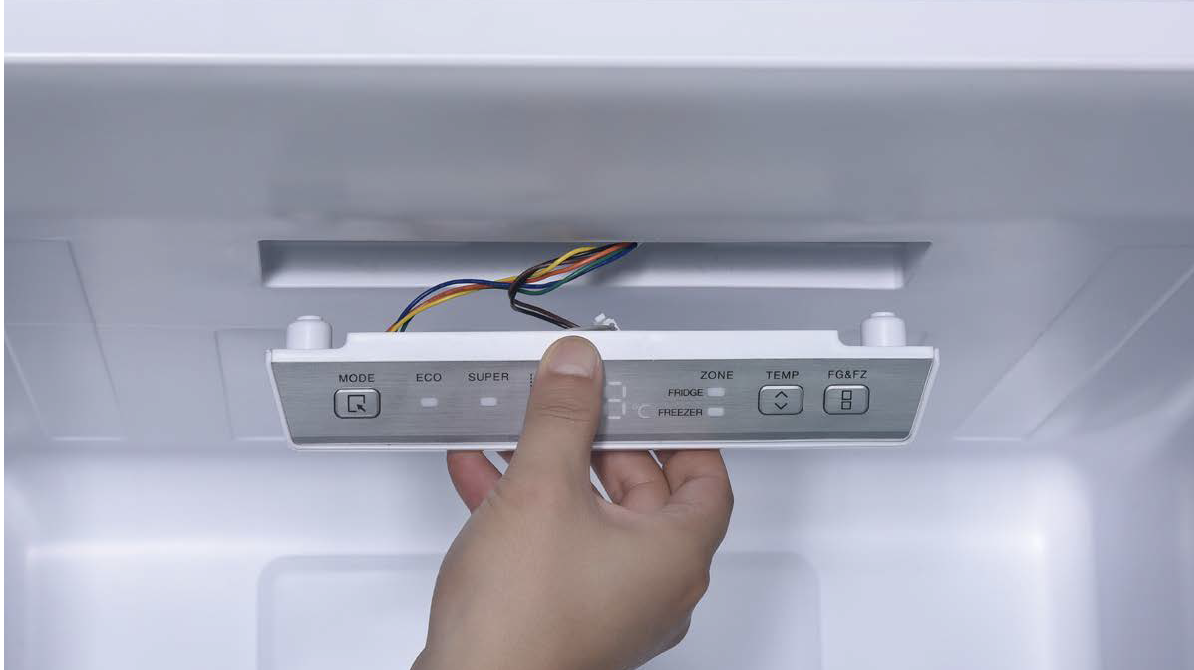
Step 4
Disconnect the terminals for LED and for control board.
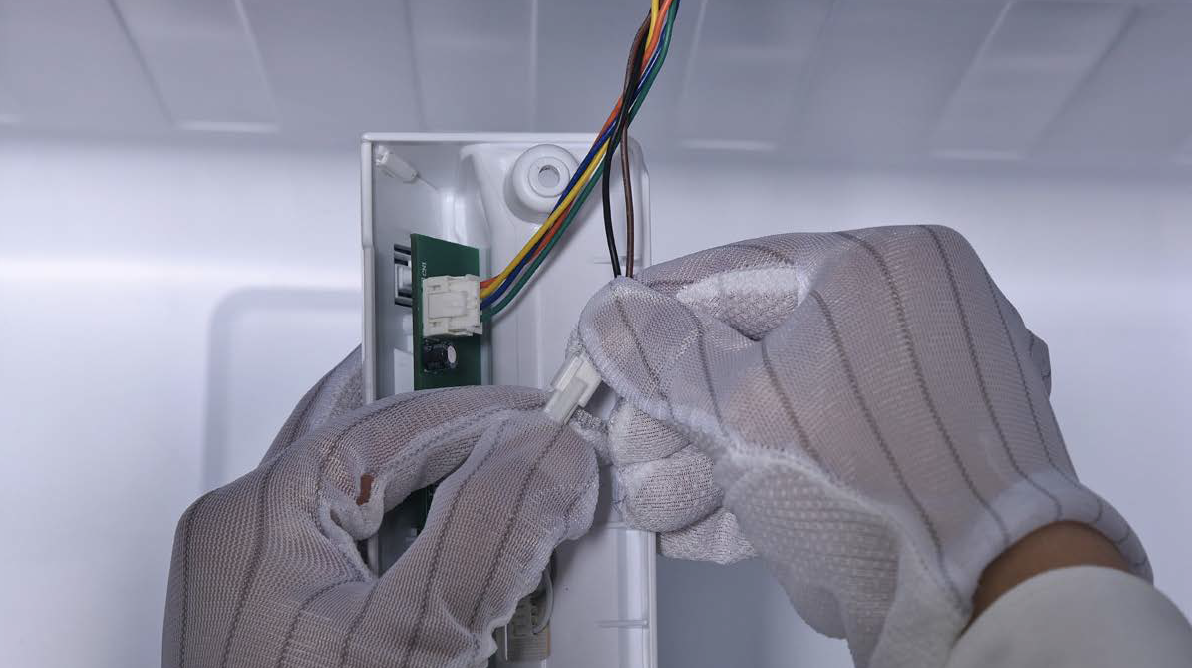
Step 5
Loosen the clips and take off the control panel.
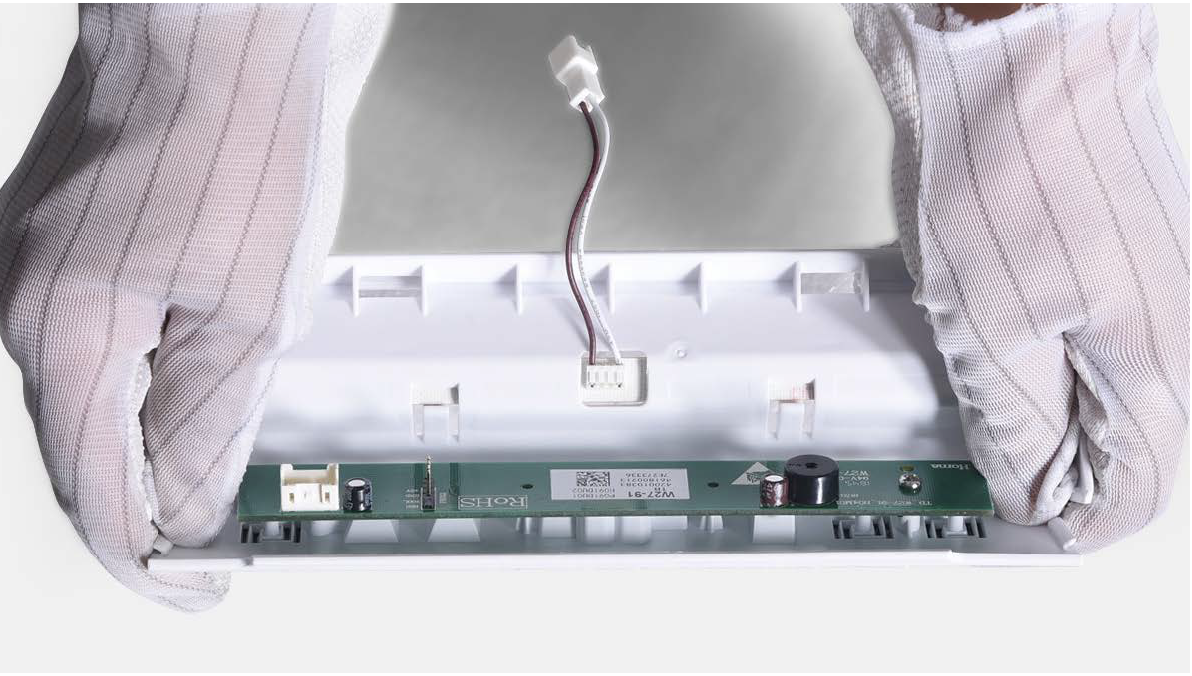
Step 6
Unscrew with 6mm Philips screwdriver and move away the control board.
Reverse steps above to install the controll board. Please note below point:
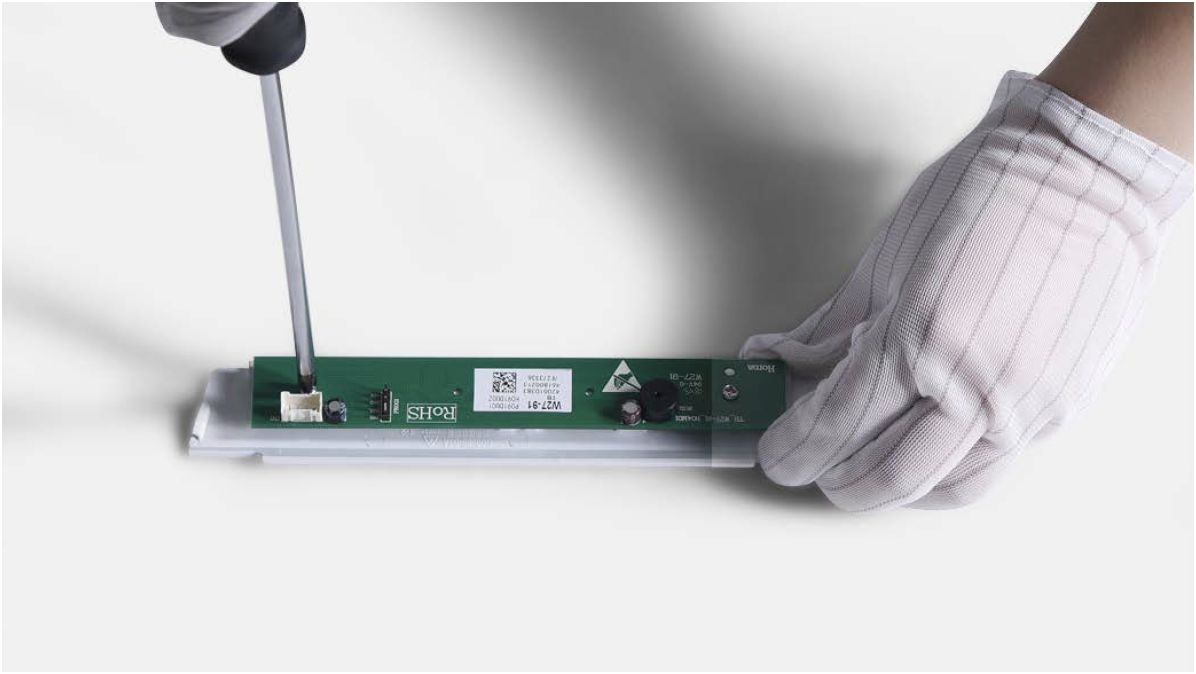
Tip 1
Pay attention to wires while installing the internal display, to avoid damaging with screw.
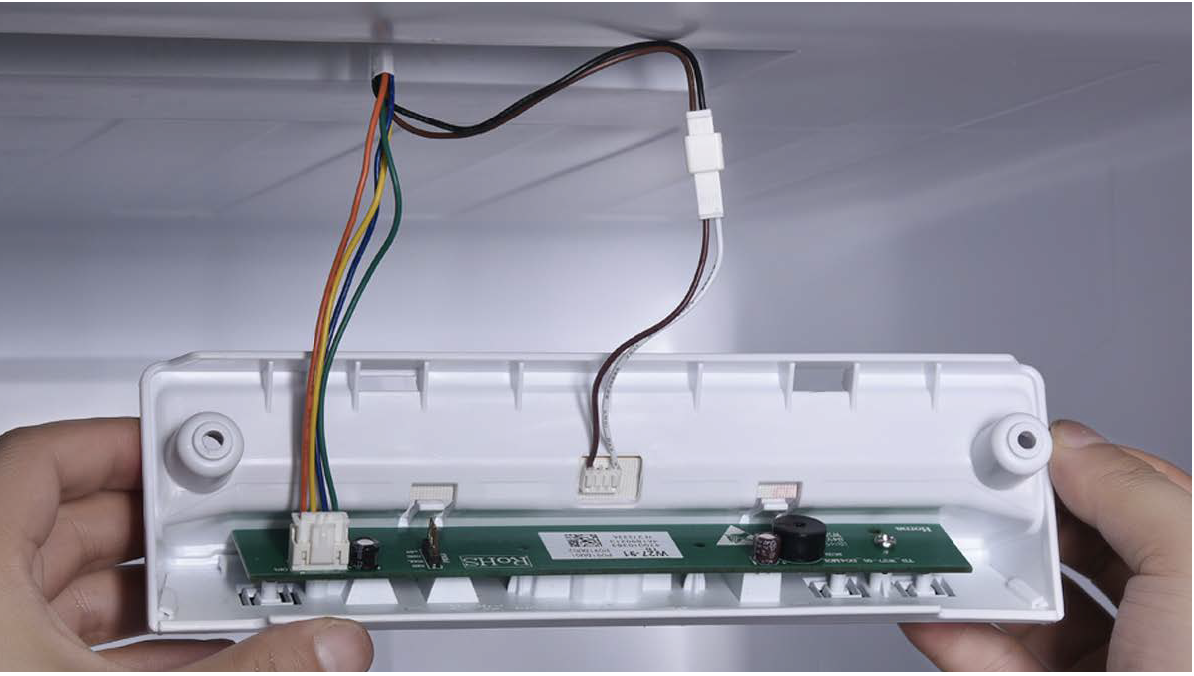

PROCEDURE 6
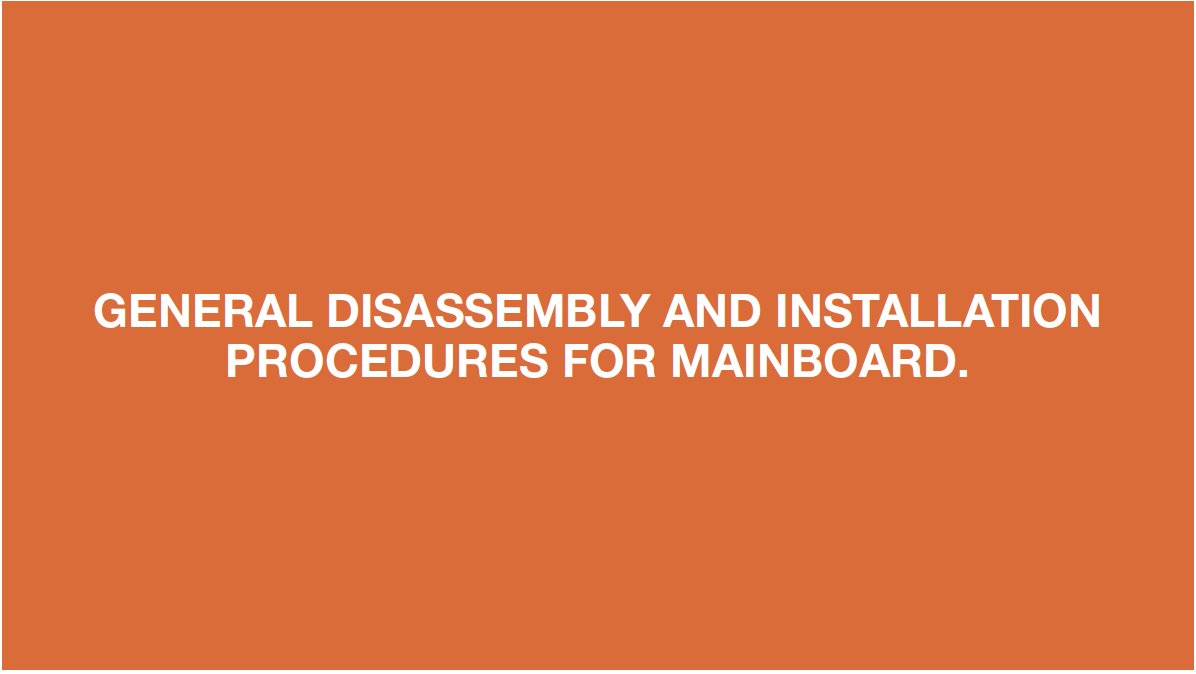
Step 1
Prize up the terminal
clicks (if any).
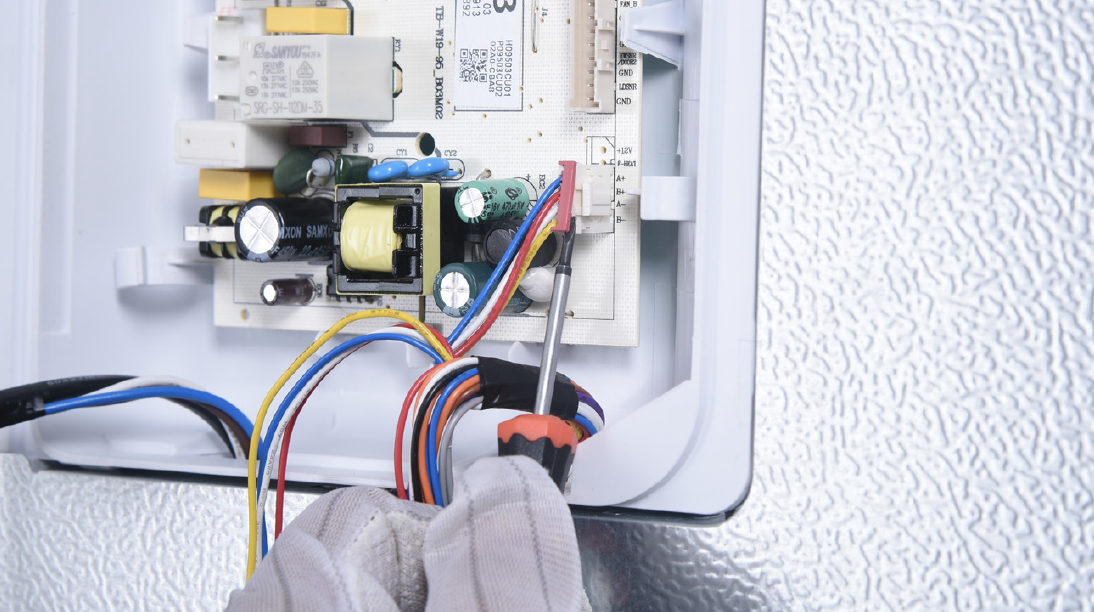
Step 2
Disconnect the terminals.
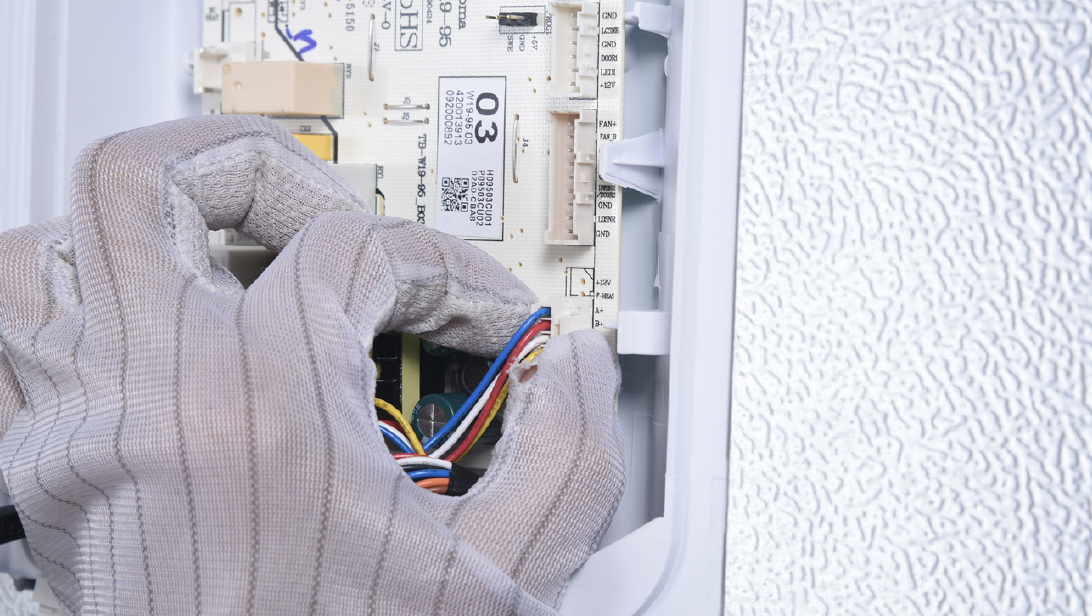
Step 3
Unscrew the mainboard.
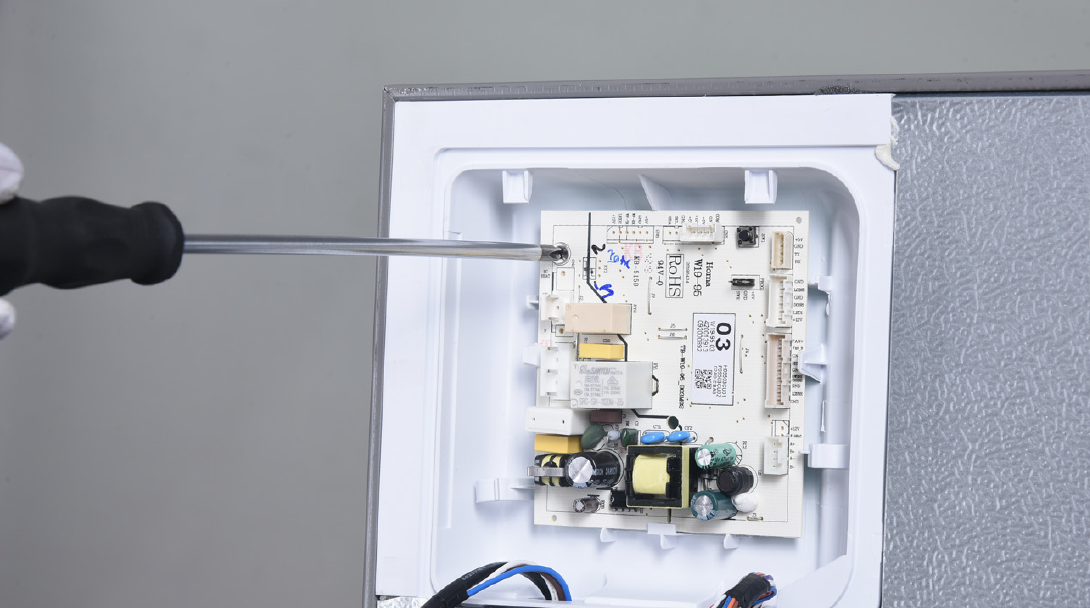
Step 4
Prize off the buckle to remove mainboard.
Reverse steps above to install a new mainboard.
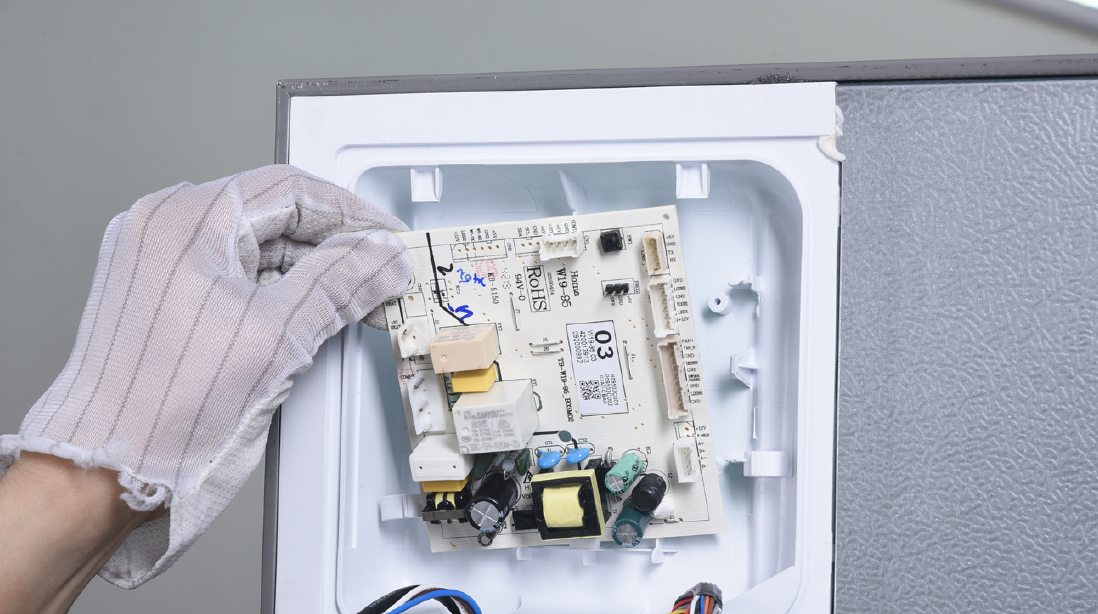

DIAGNOSIS 4

Tip 1
Make sure the sealing sponges are in good condition.
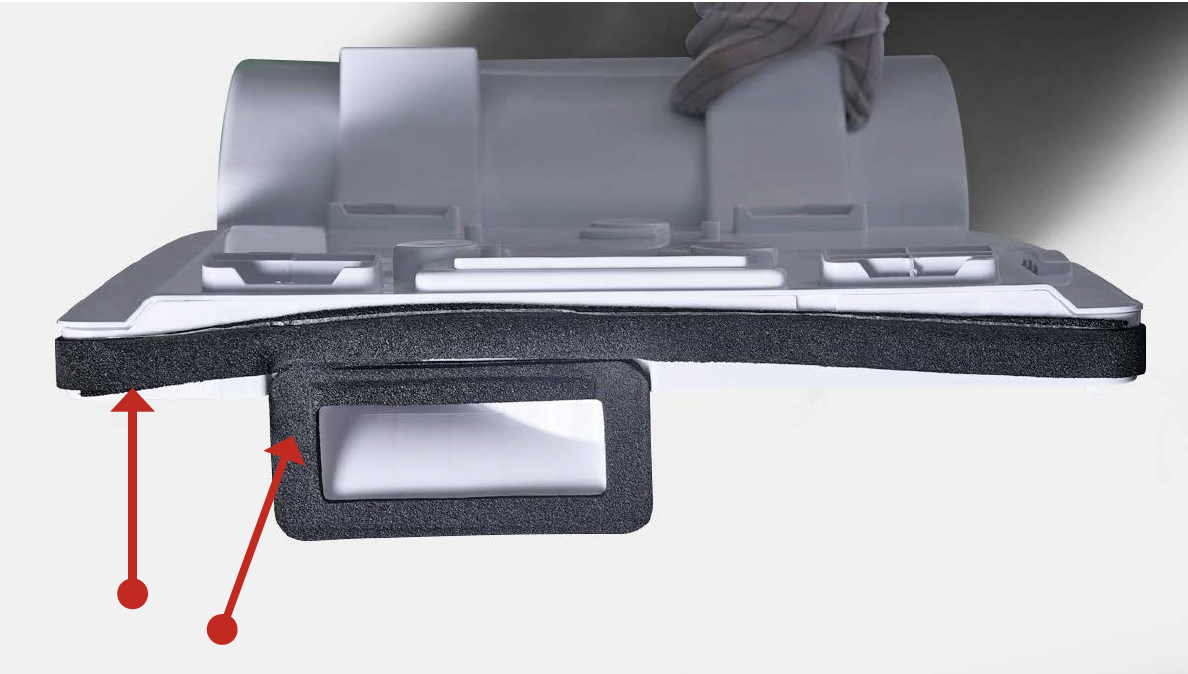
Tip 2
When reinstalling the air duct, fasten the wires to avoid crushing with air duct.
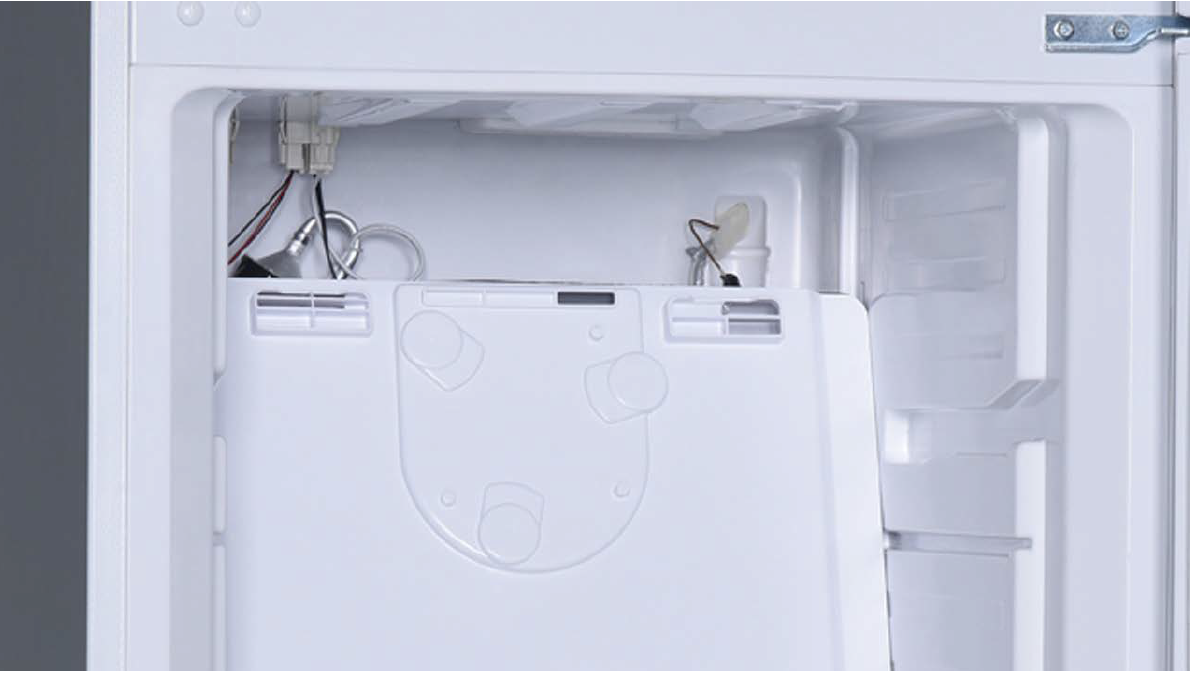
Tip 3
Install the top side first when installing the air duct.
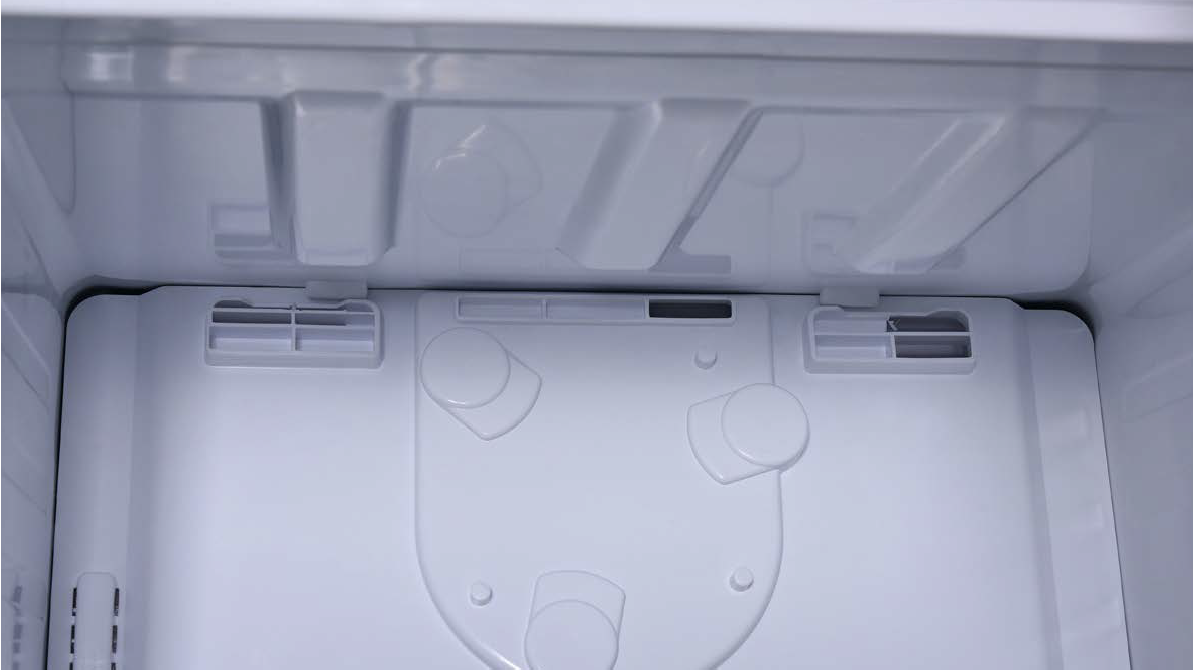
Tip 4
After pushing air duct into place, you should hear a clicking sound. If not, repeat again.
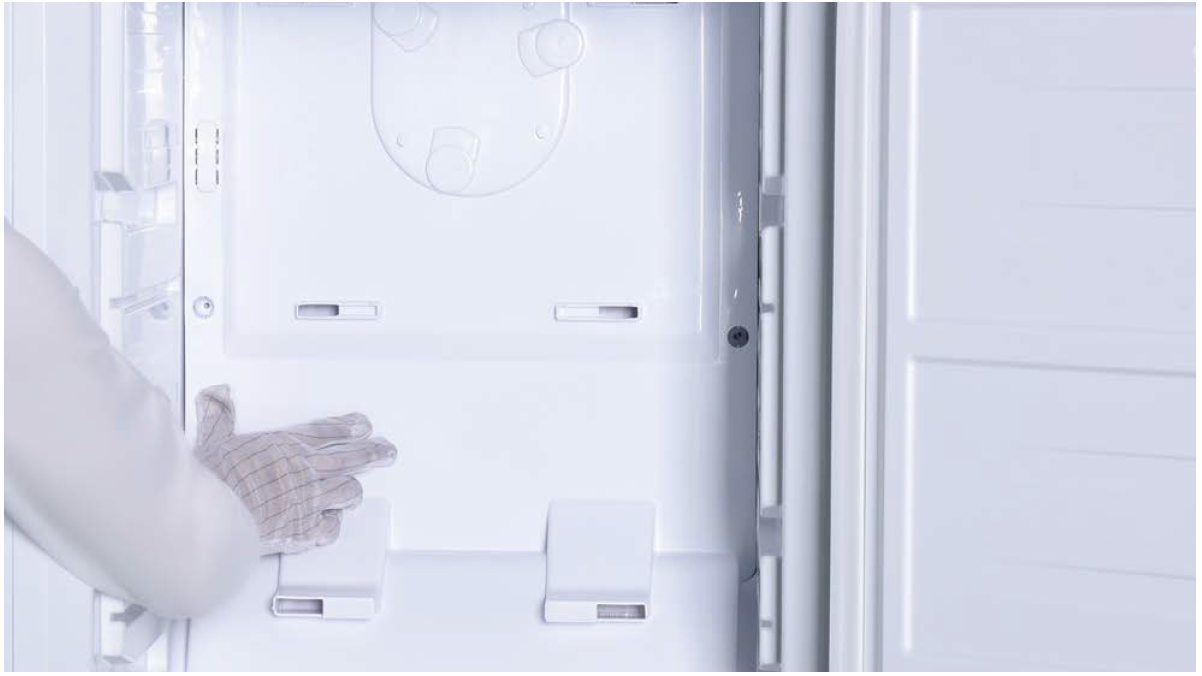
Tip 5
Check to see if there is
a wide gap between air
duct and cabinet. If there
is, reinstall air duct.
